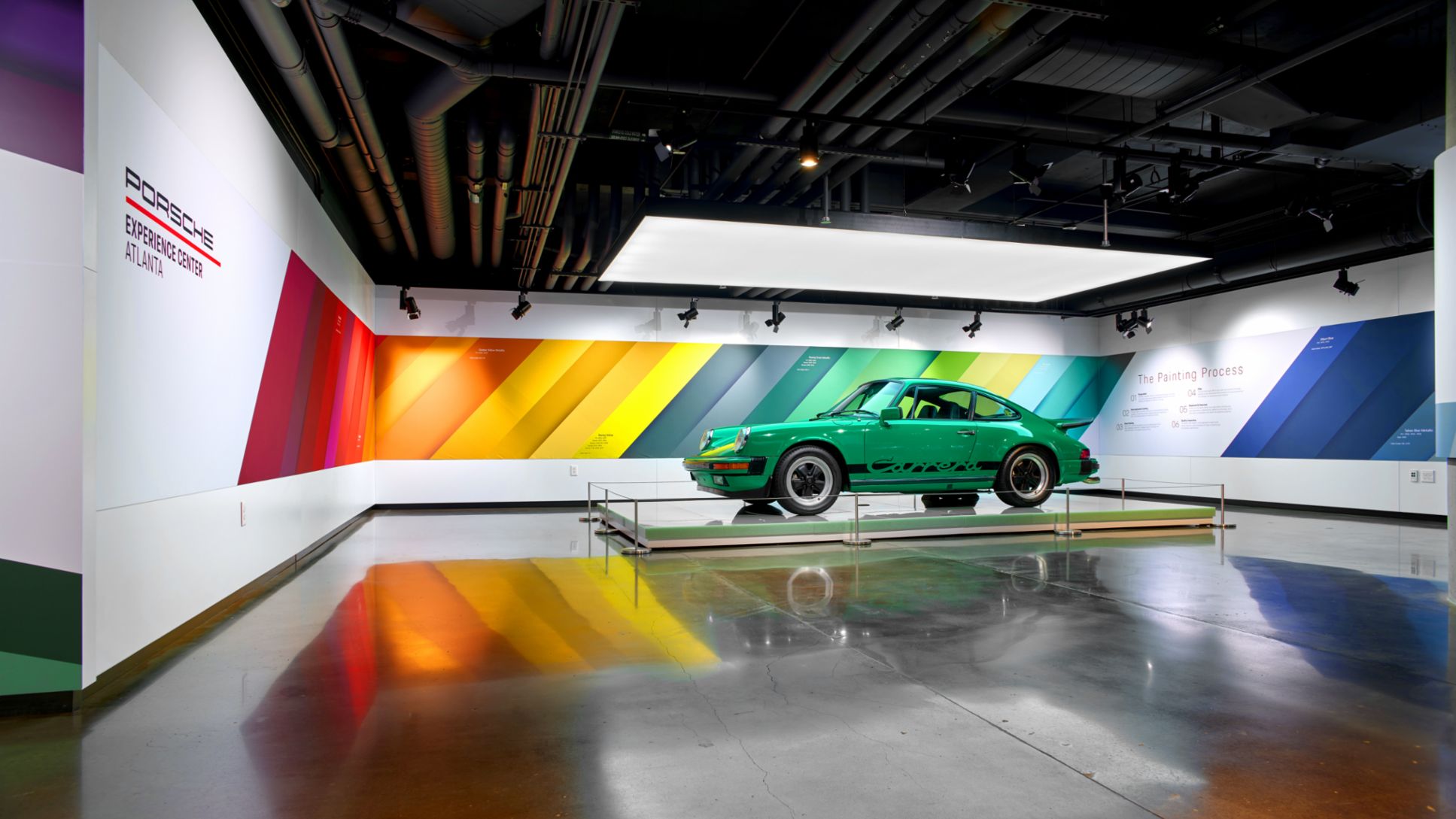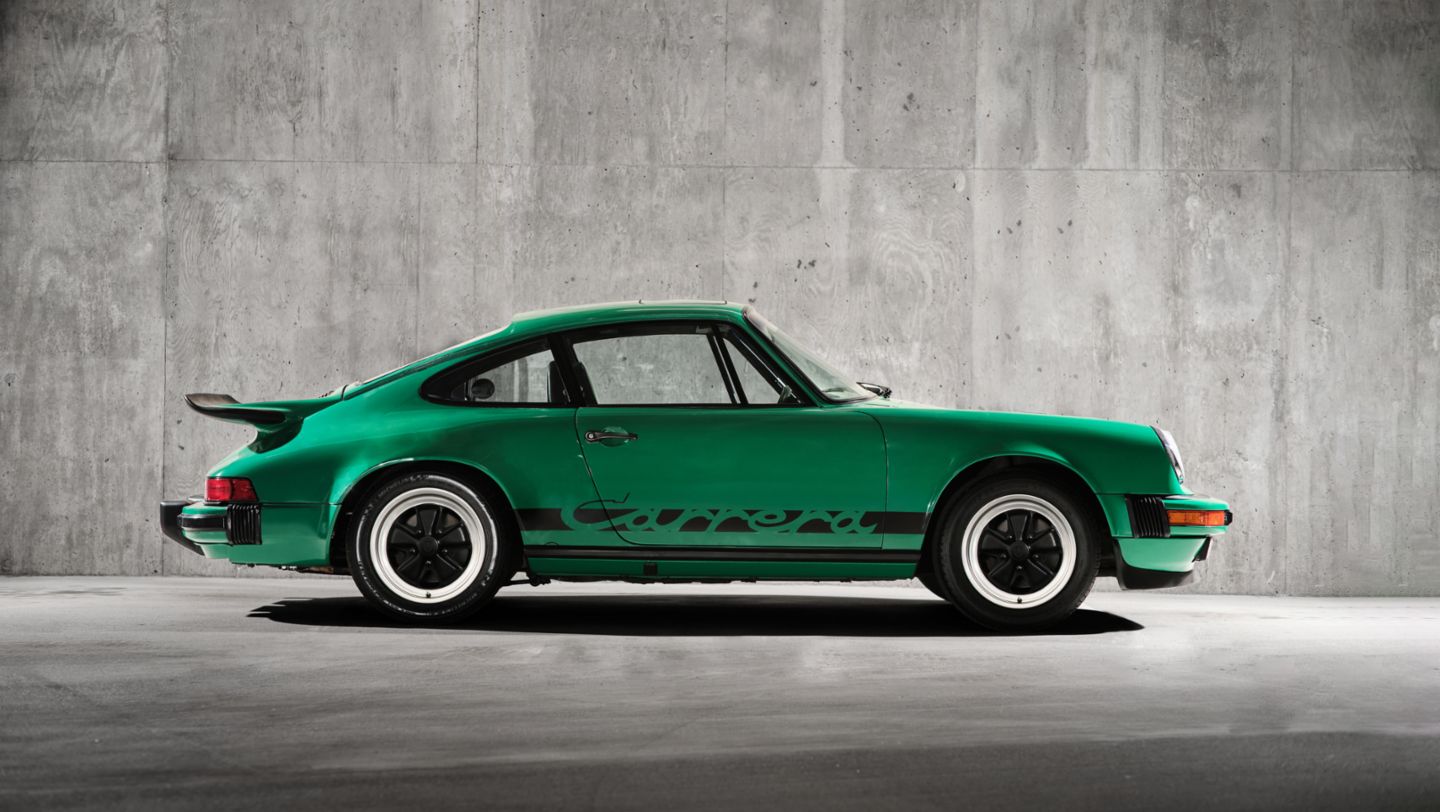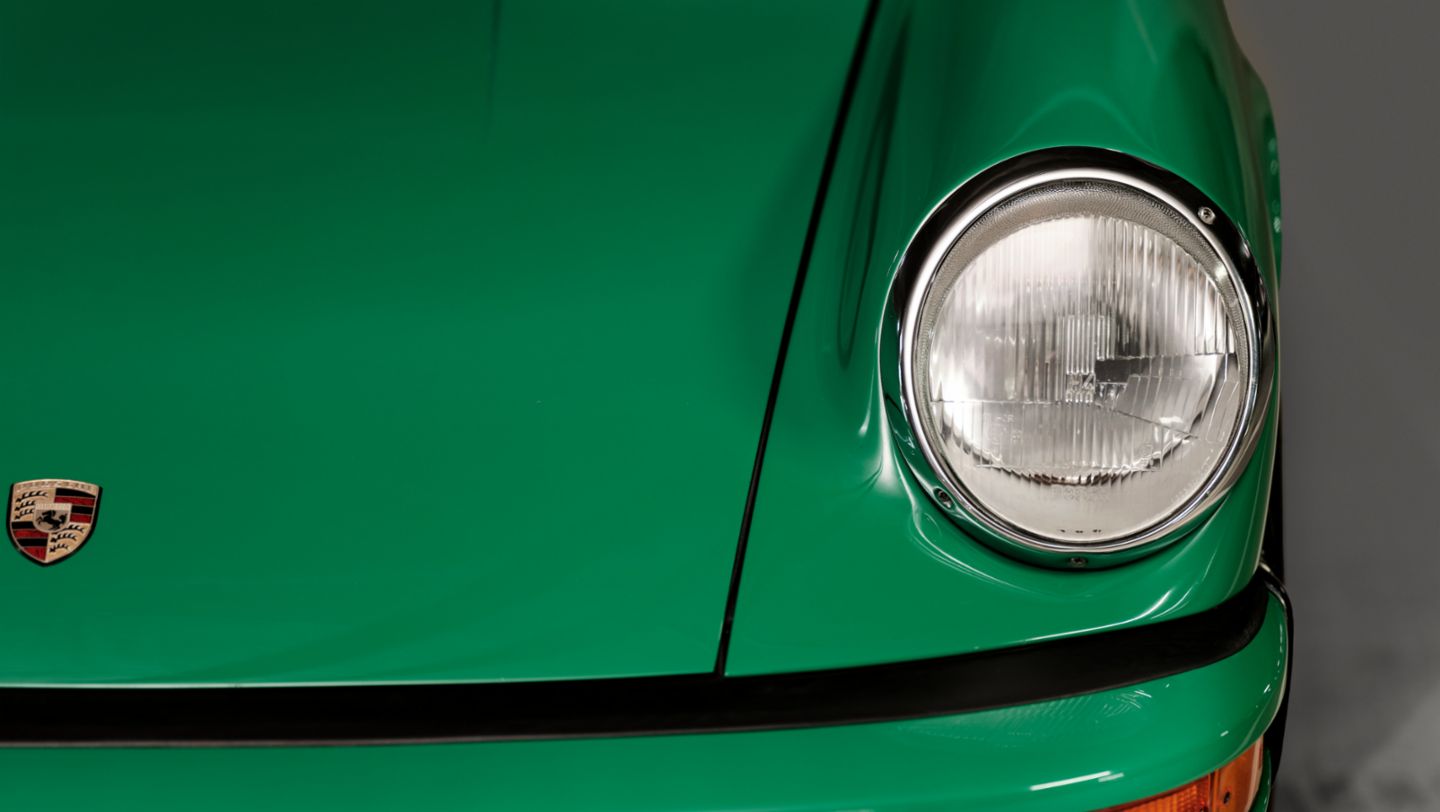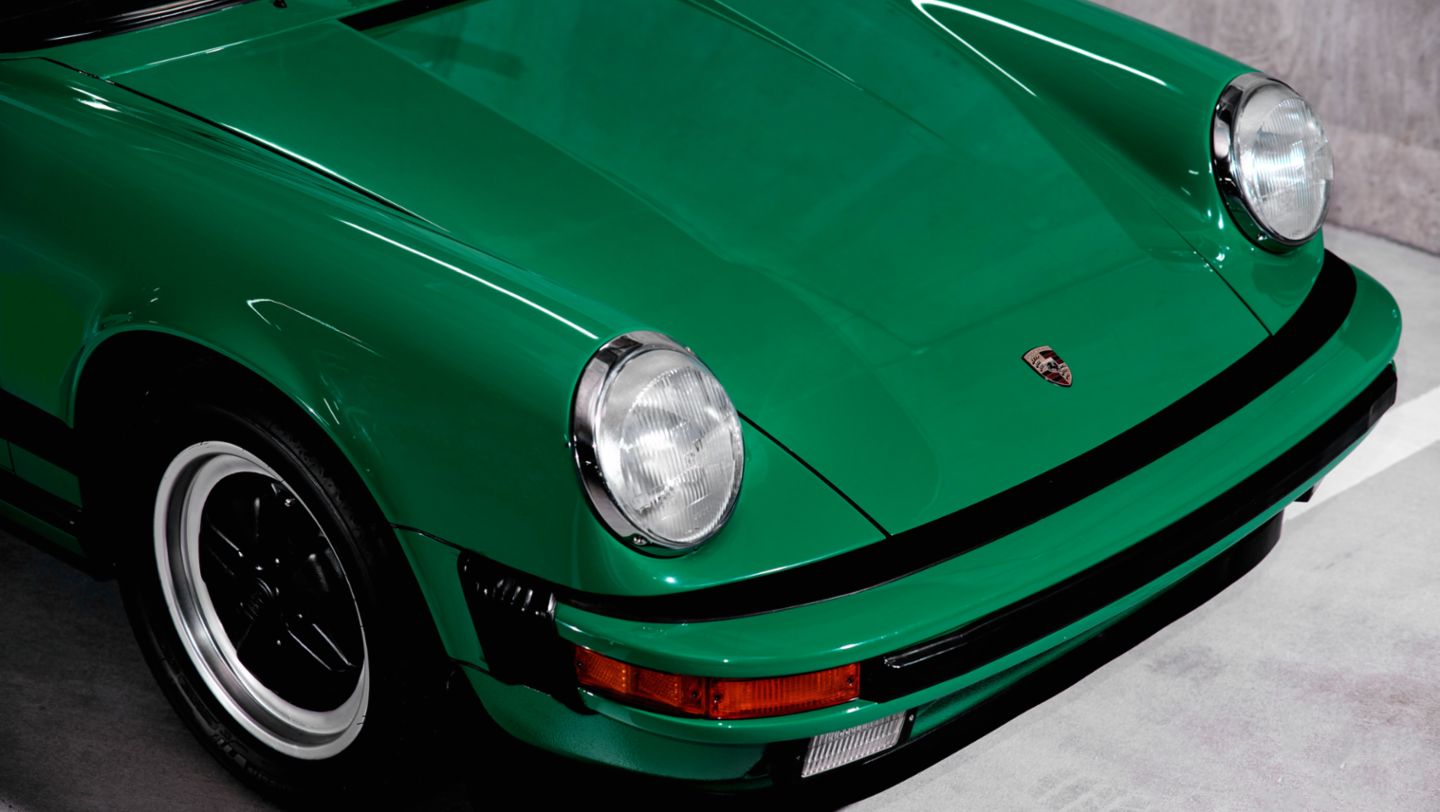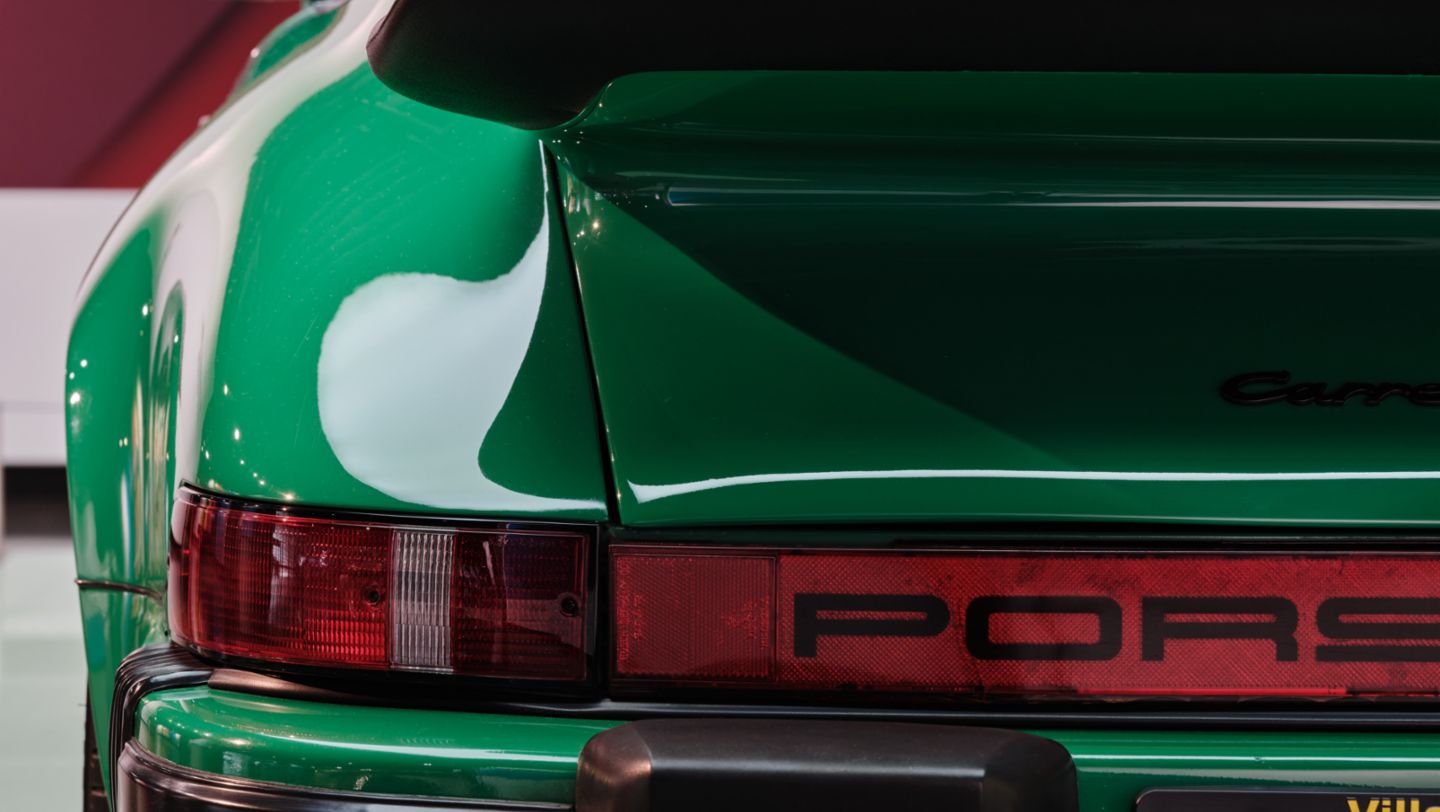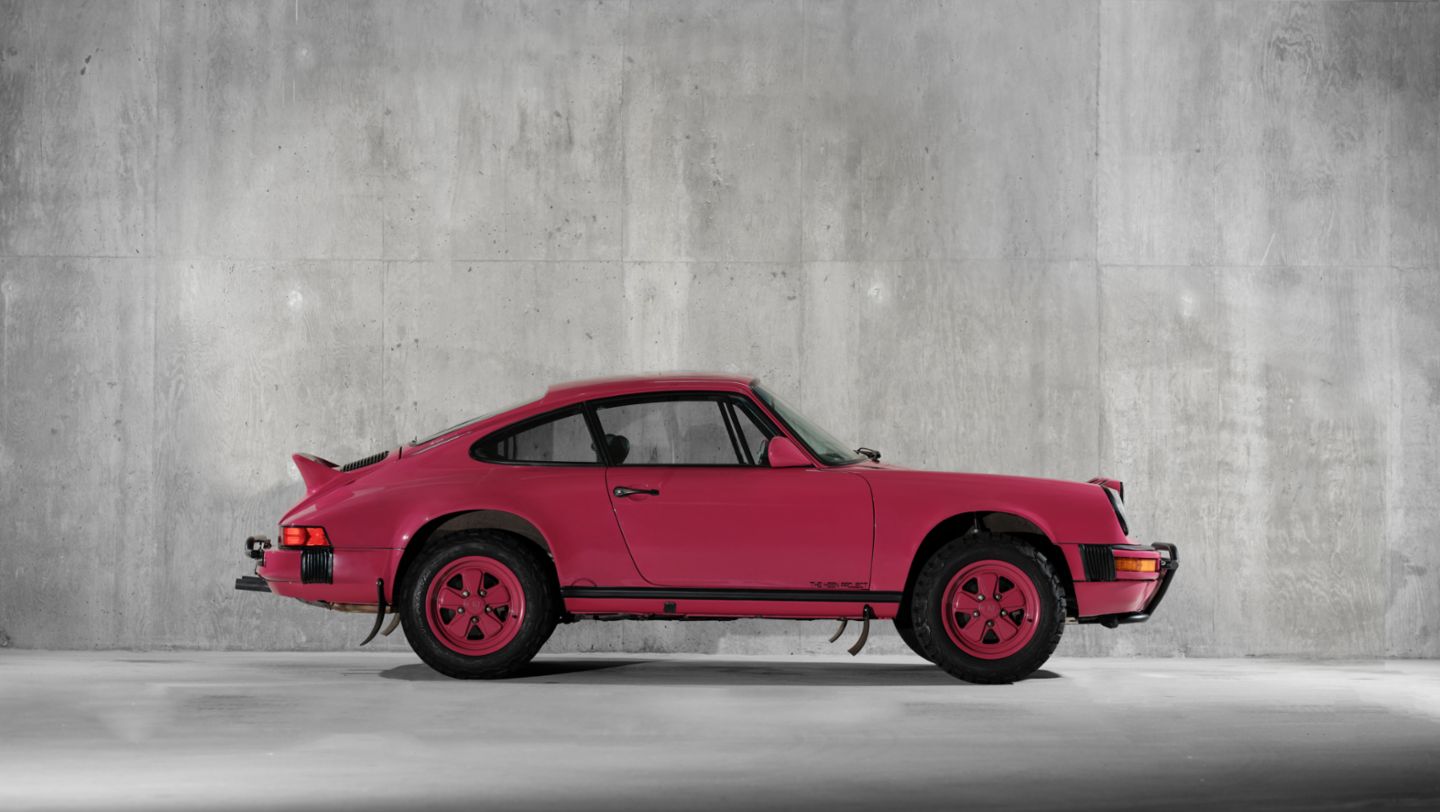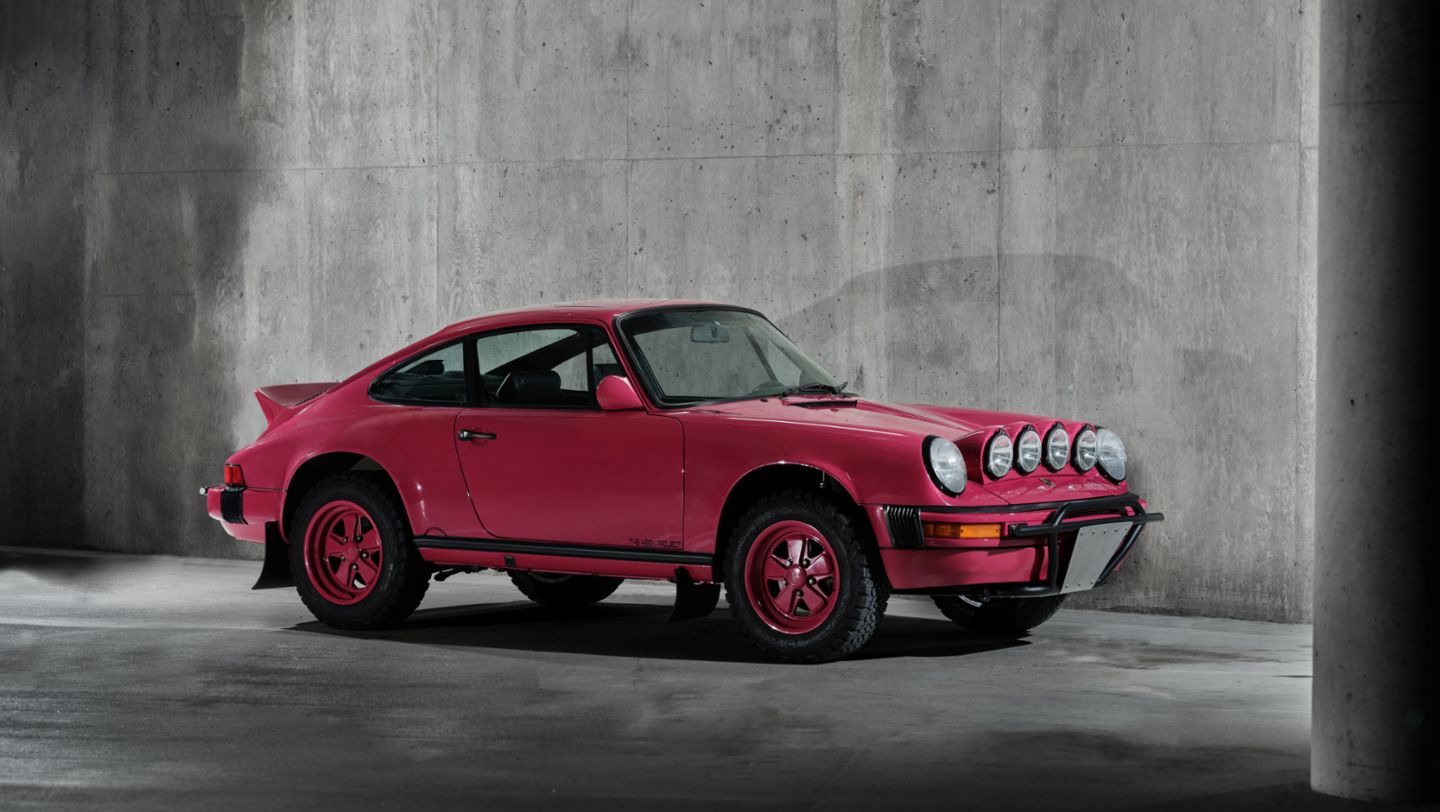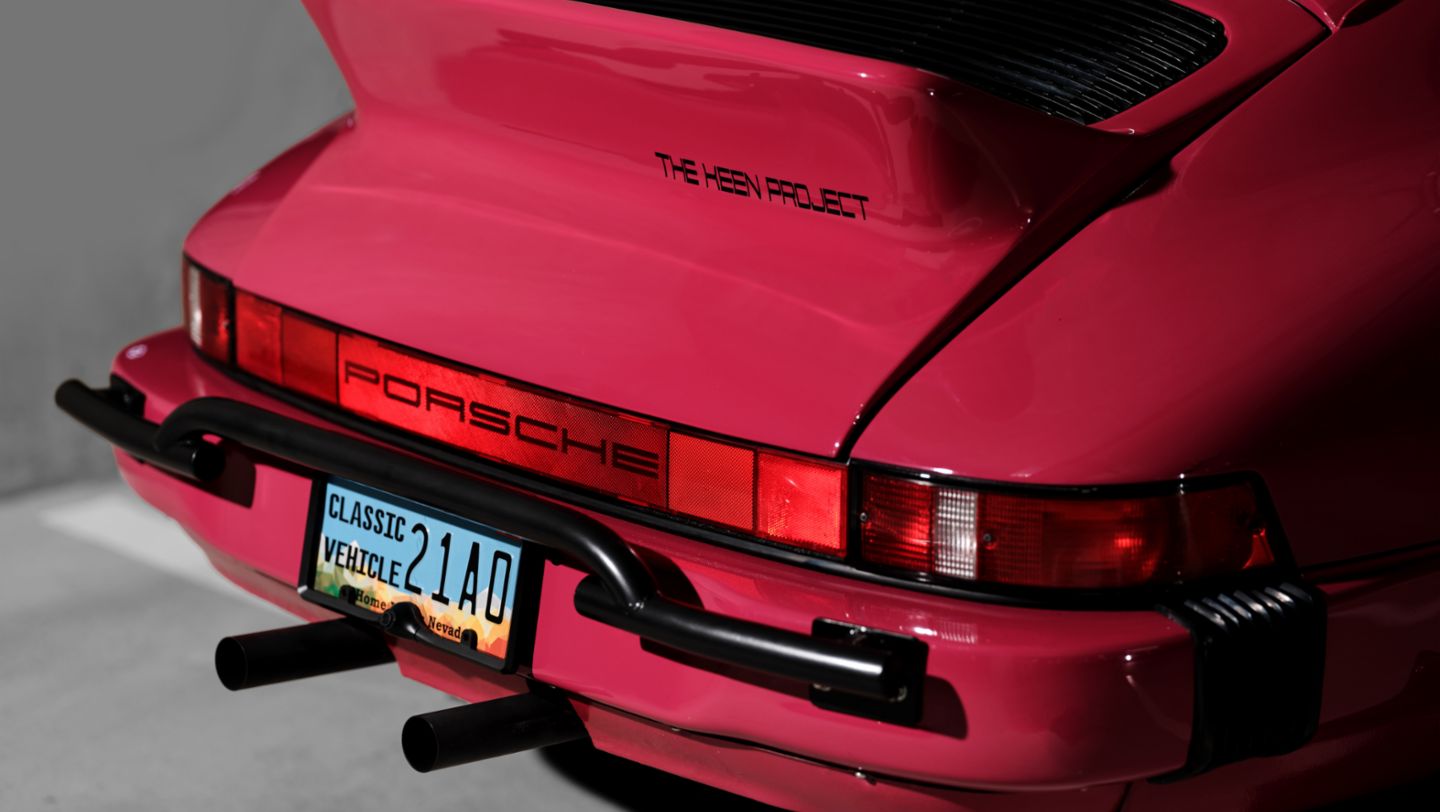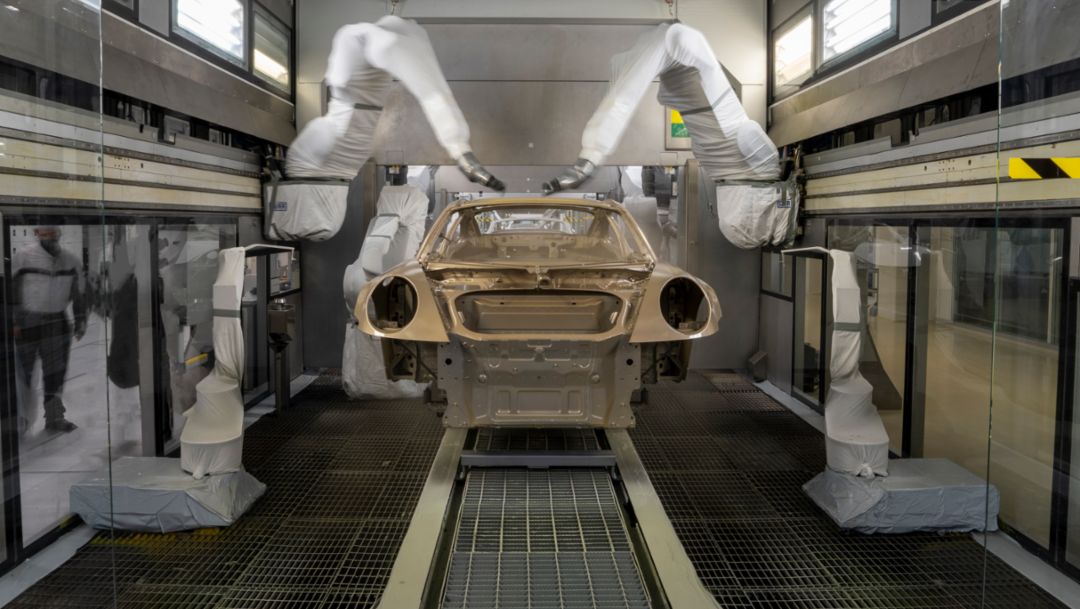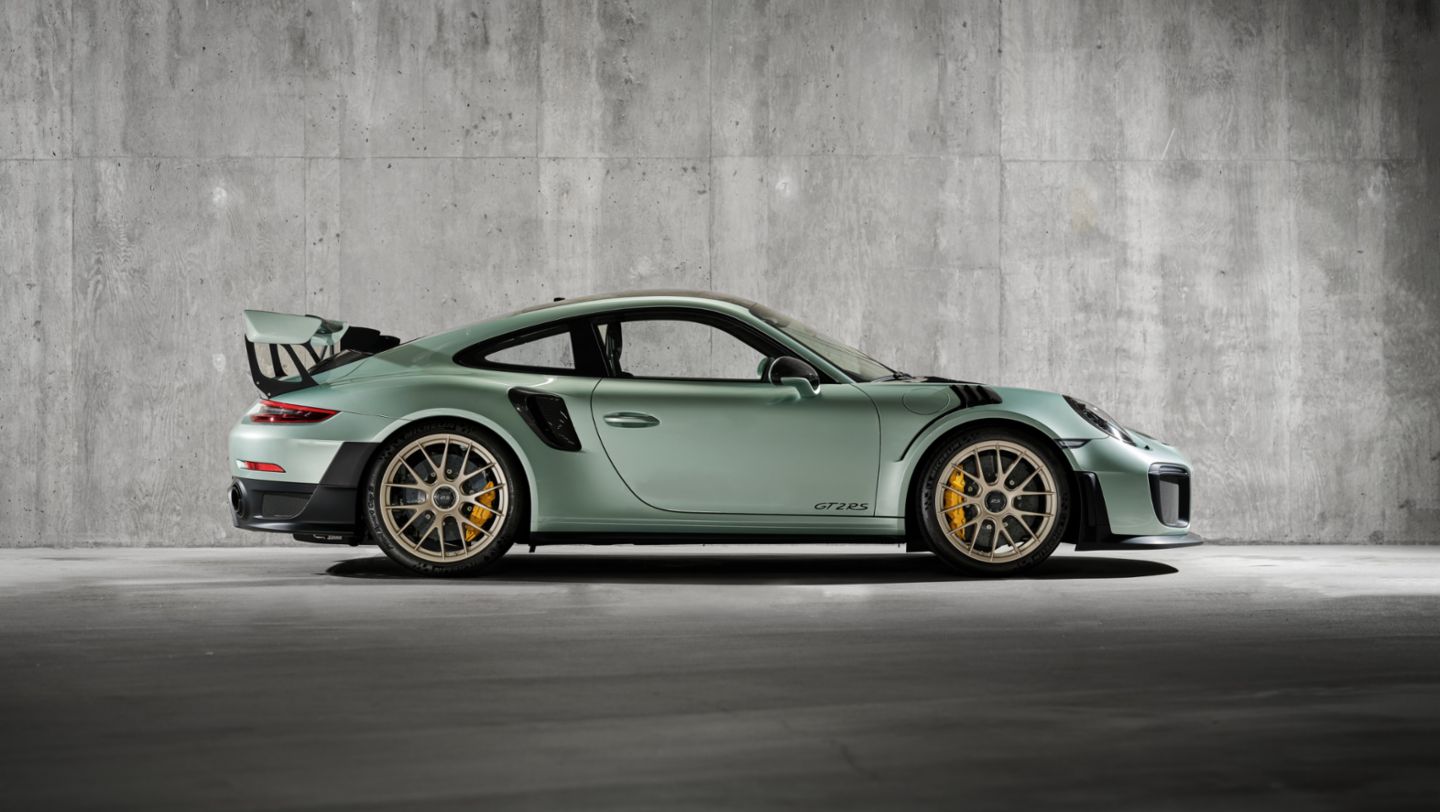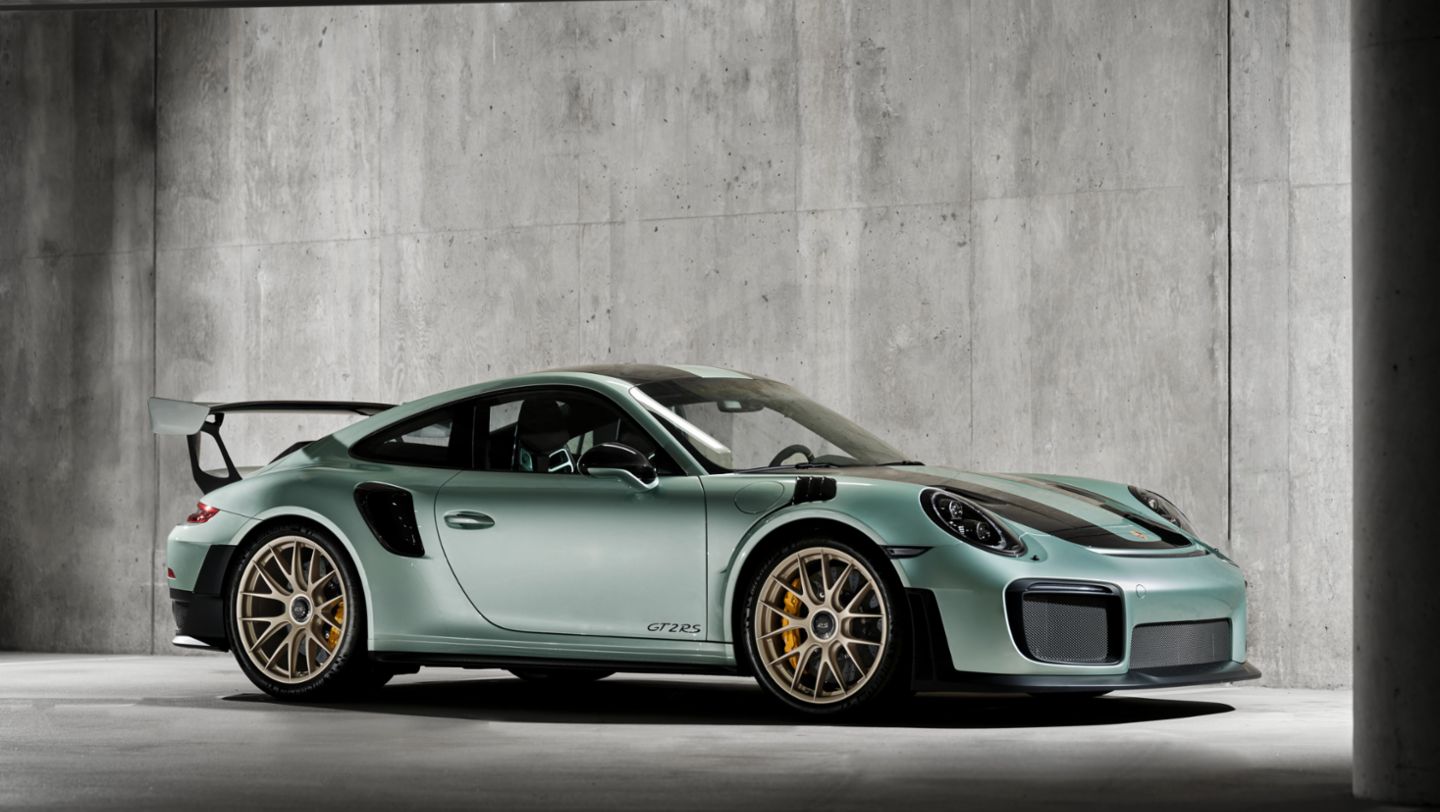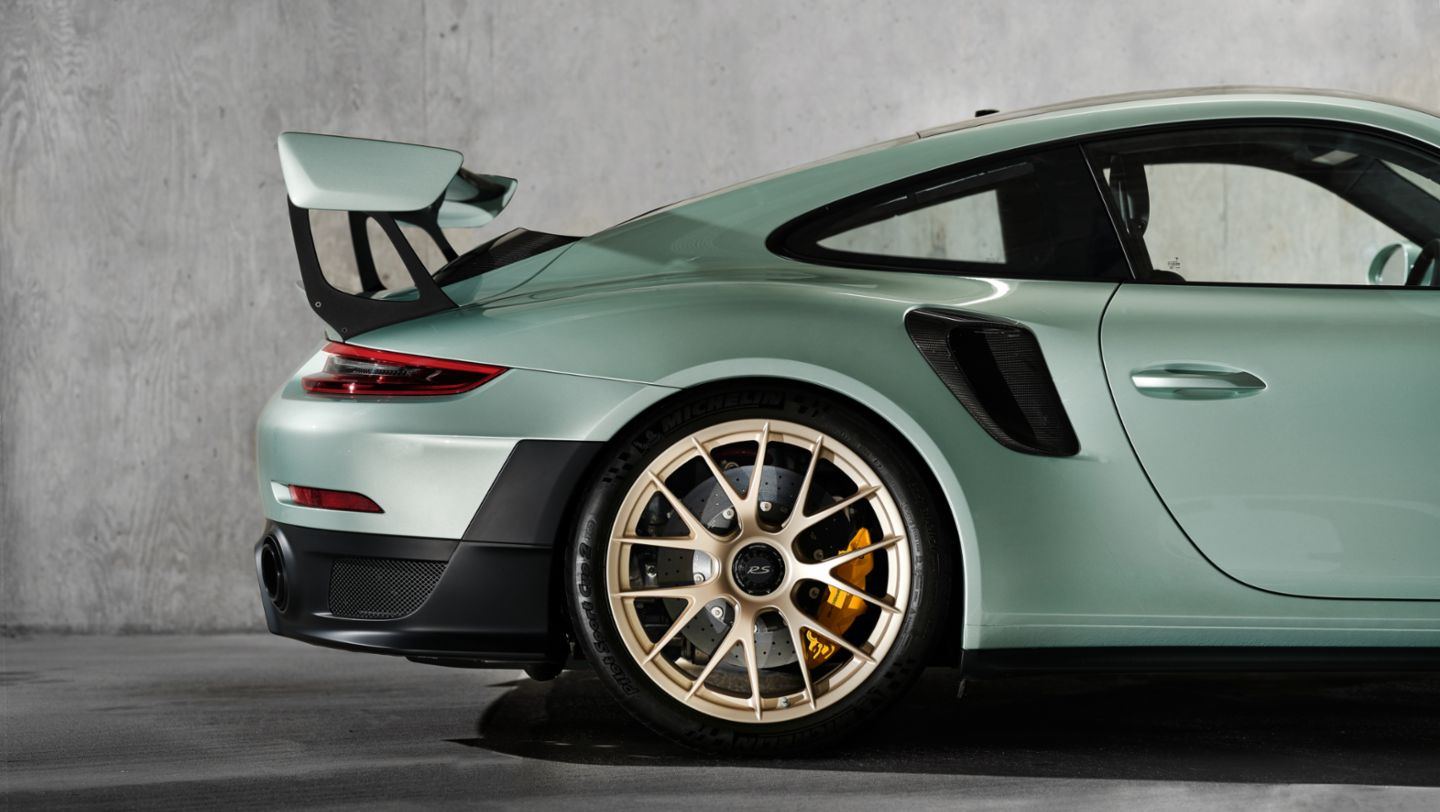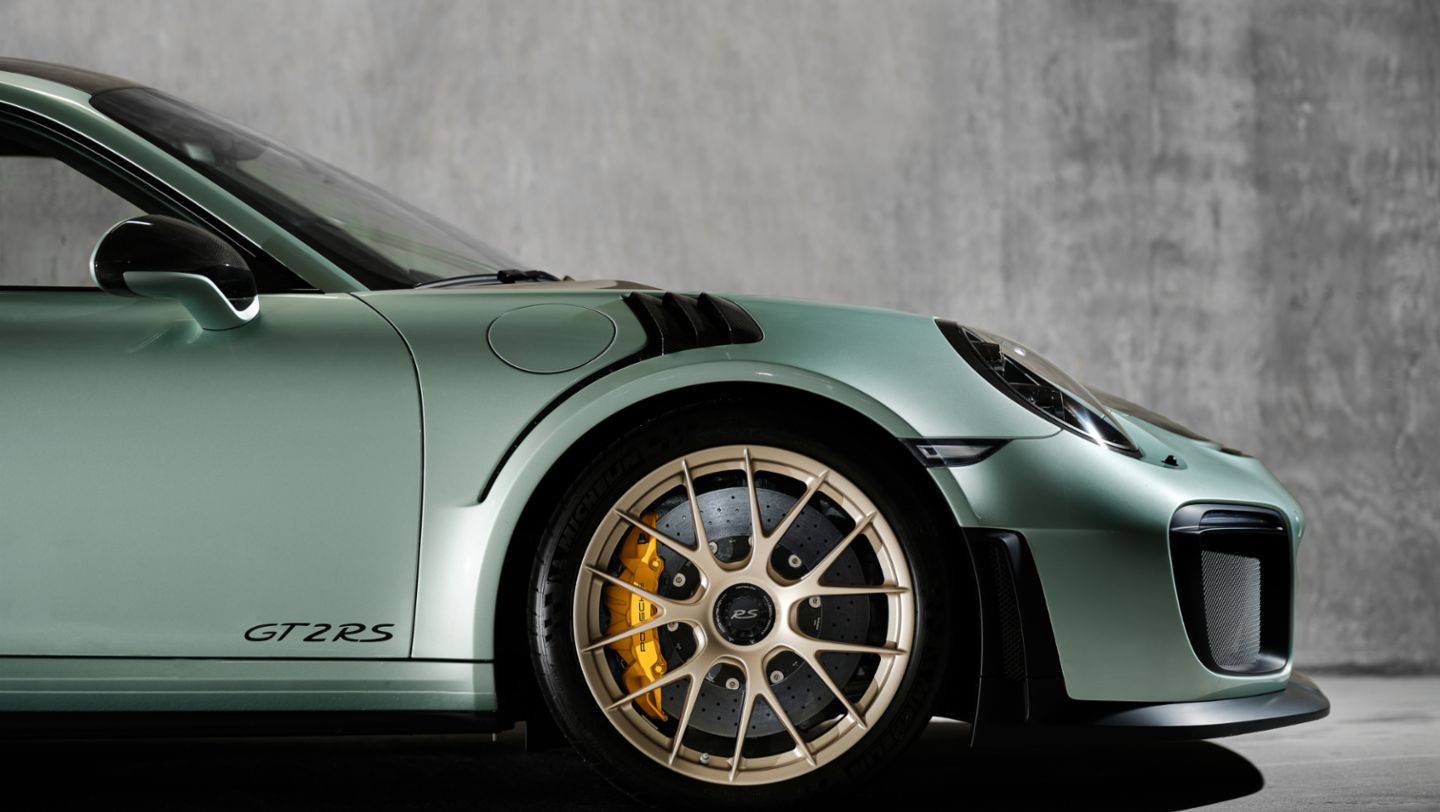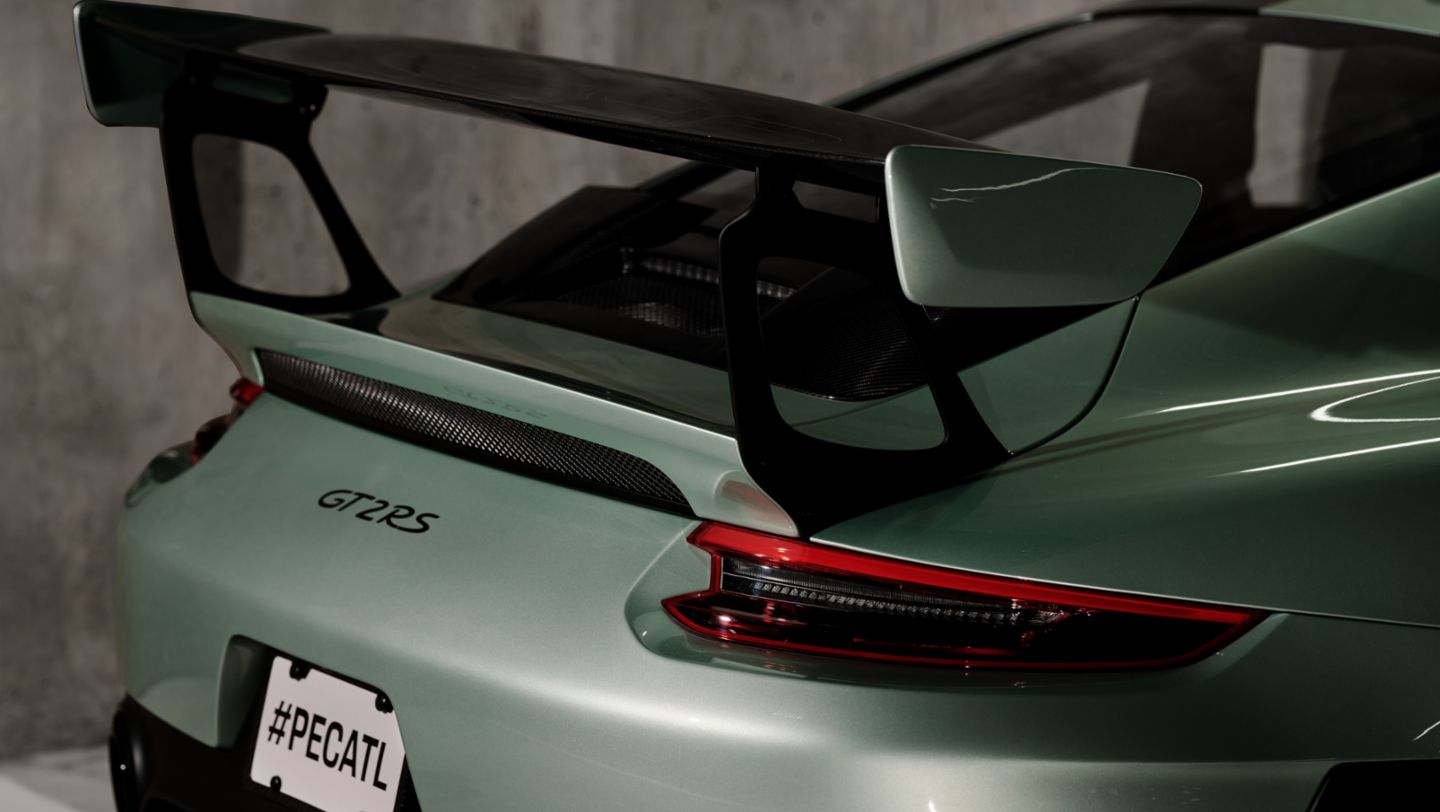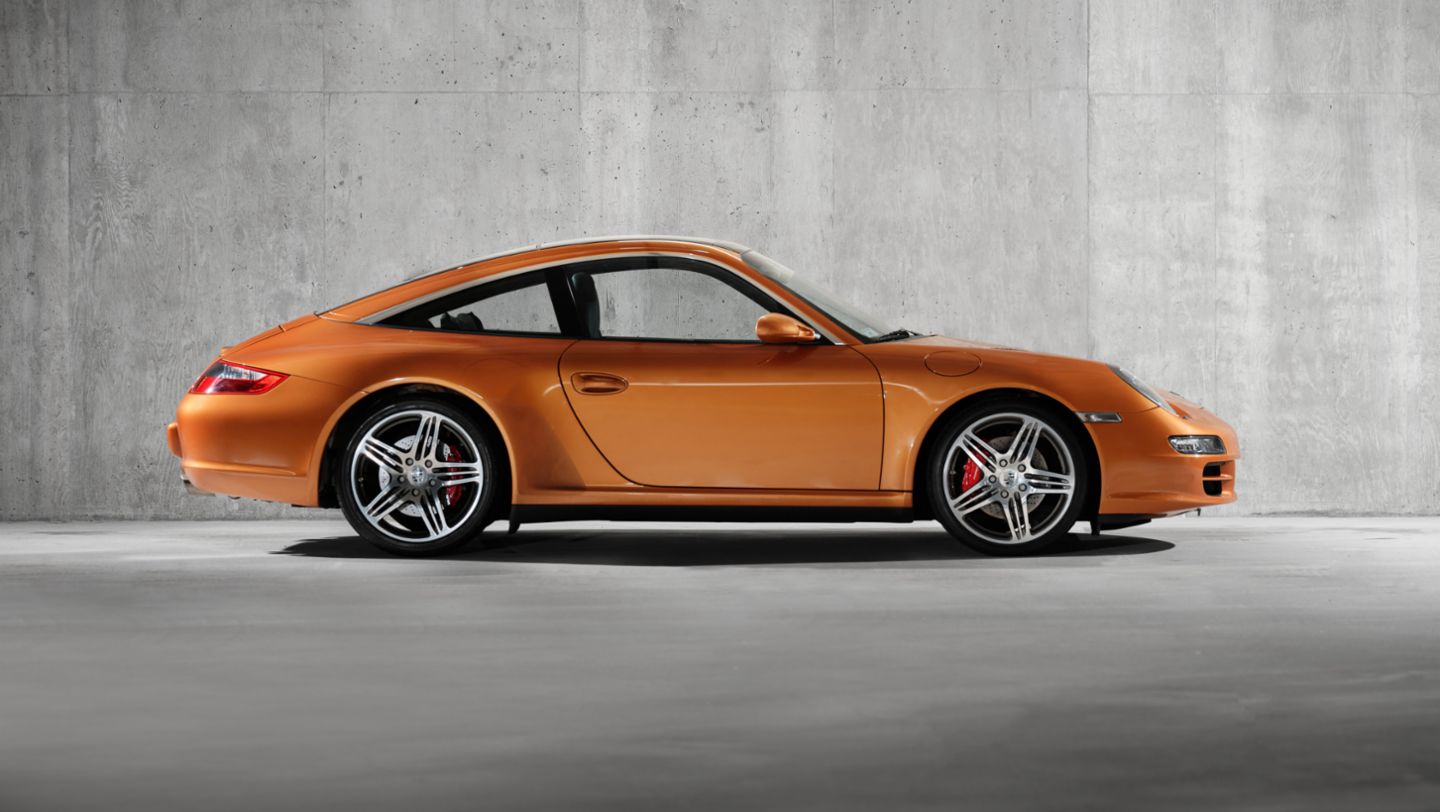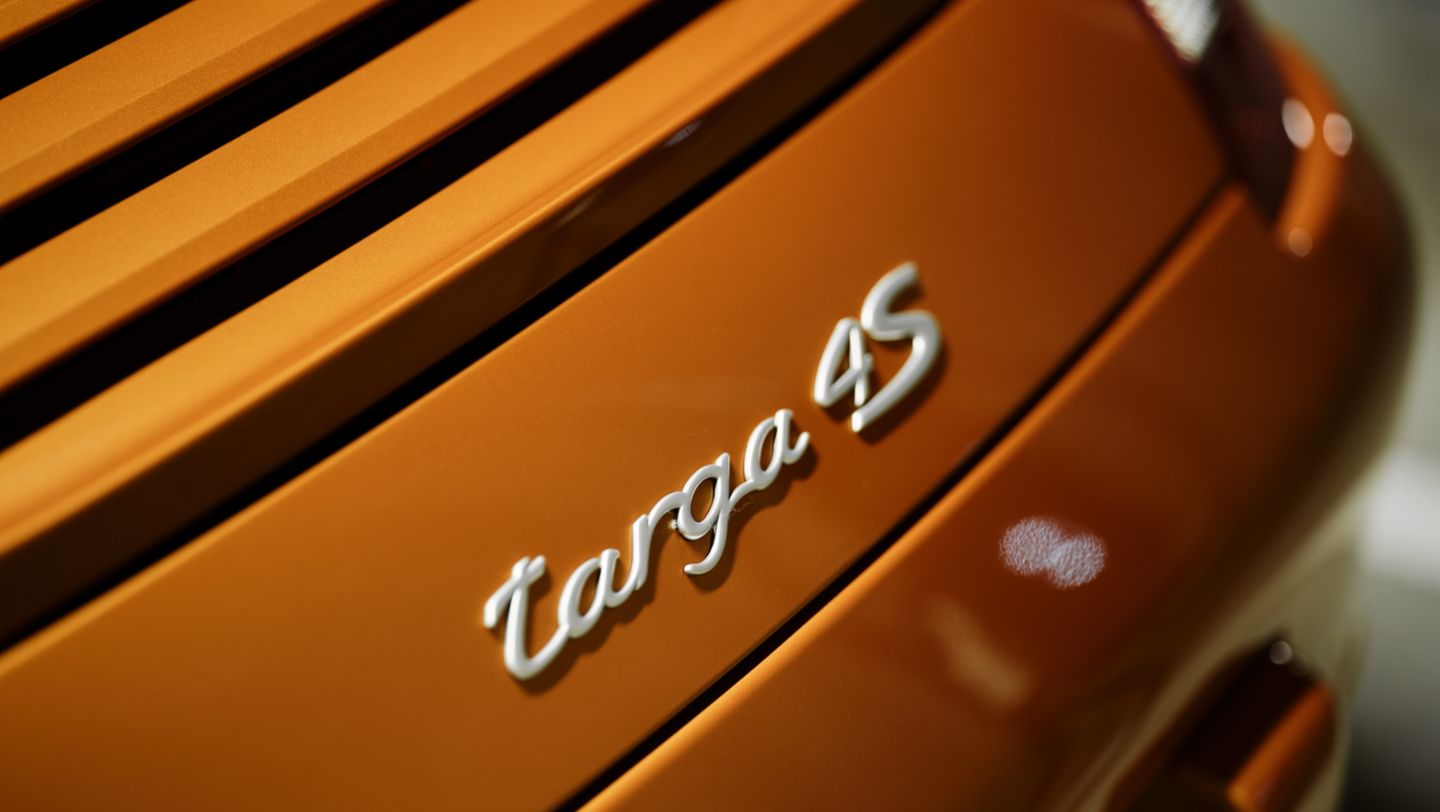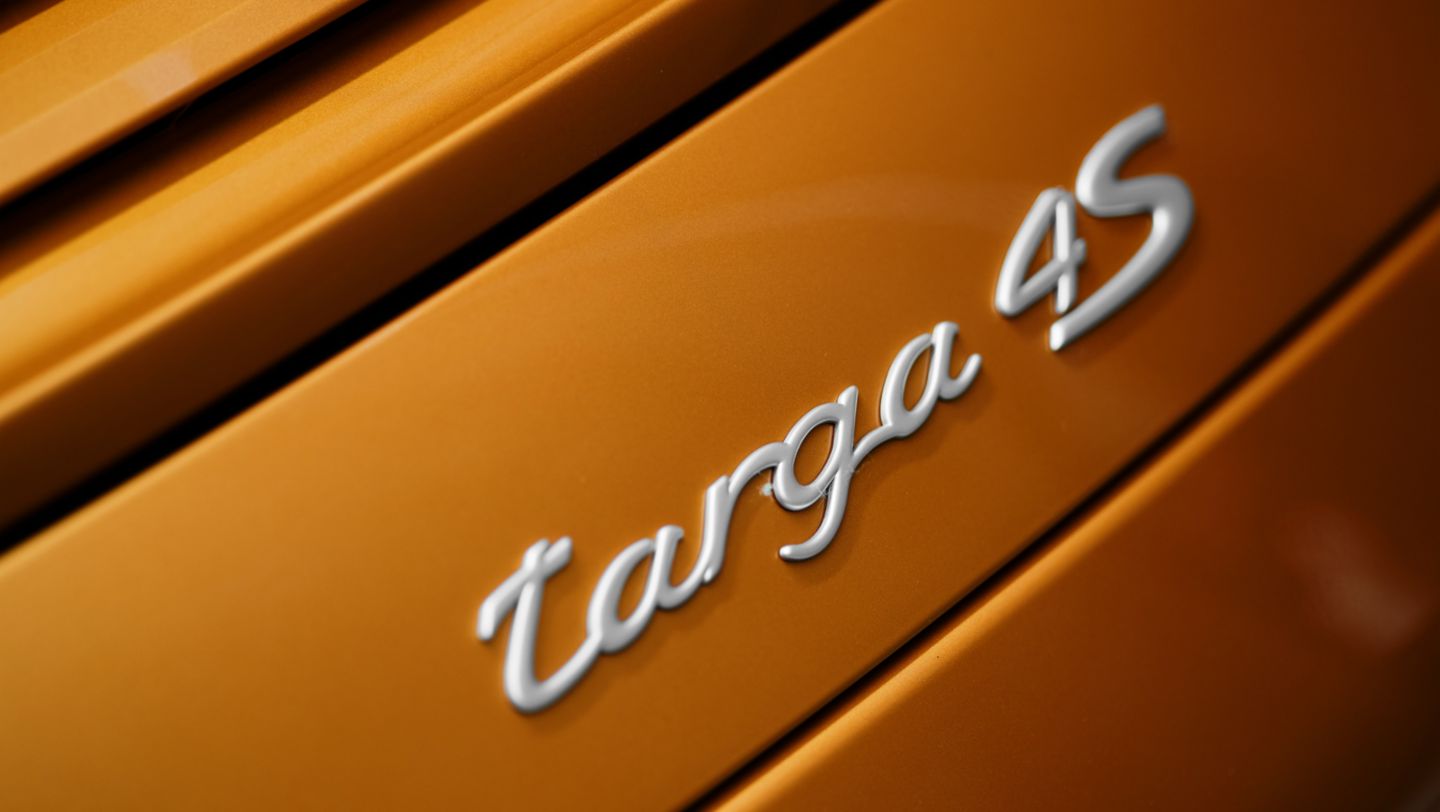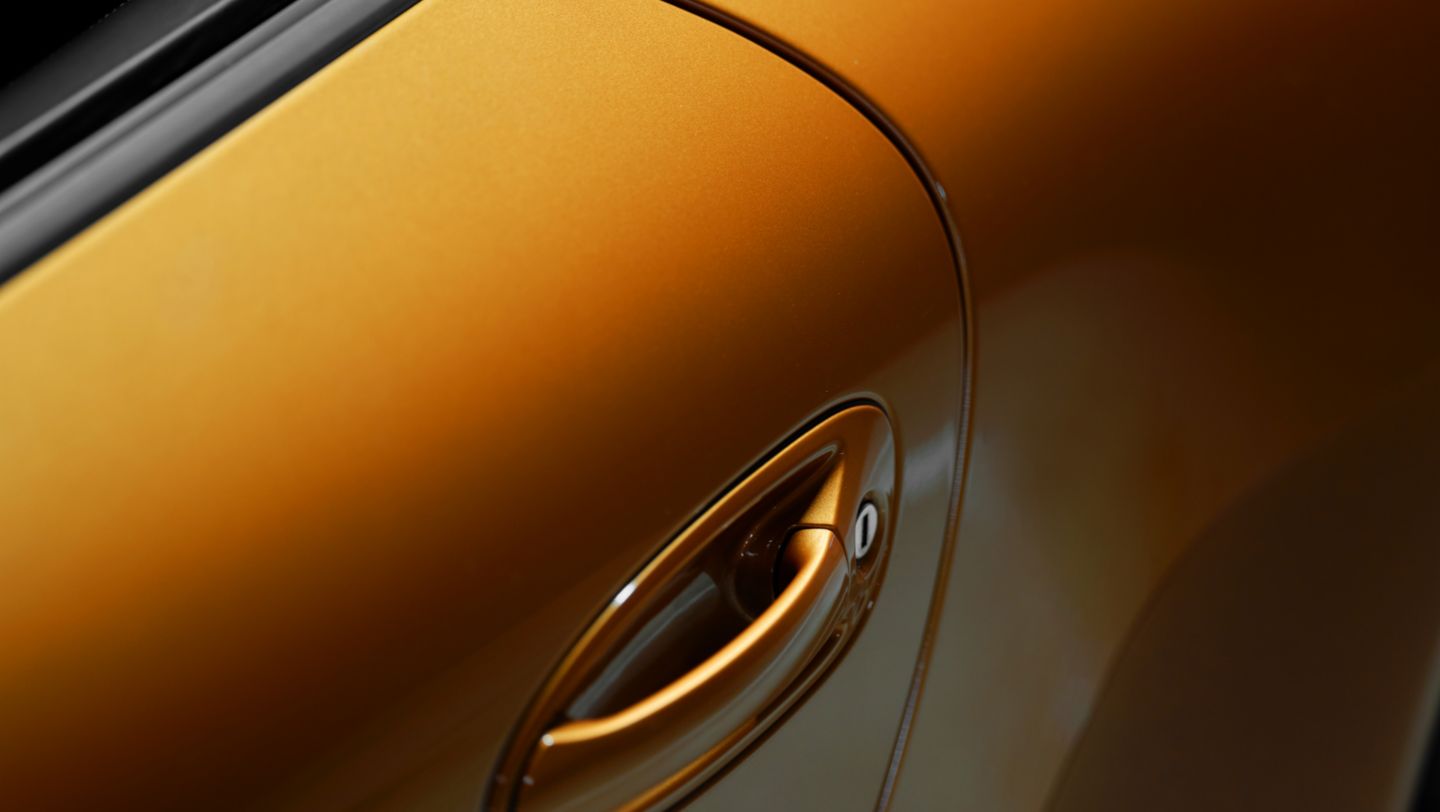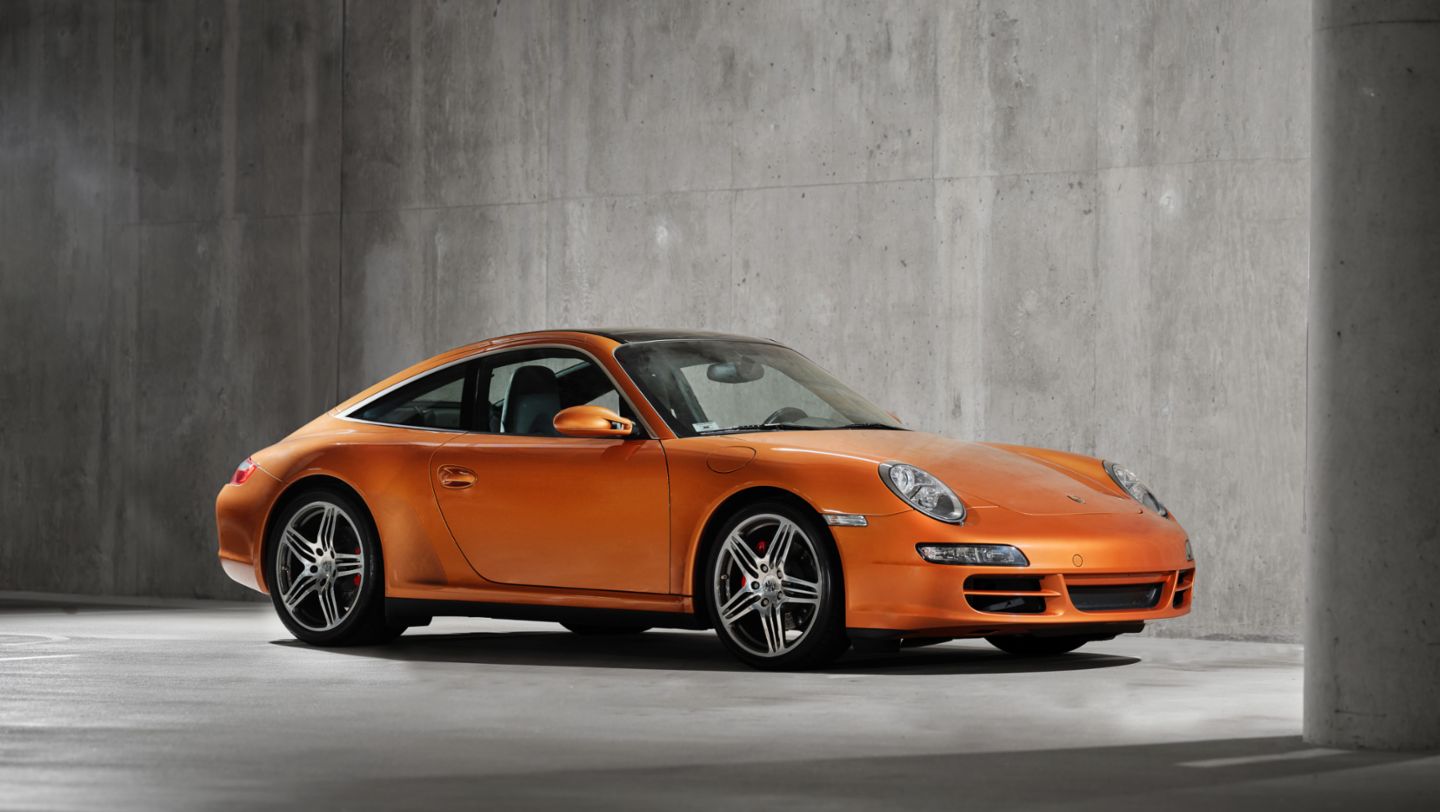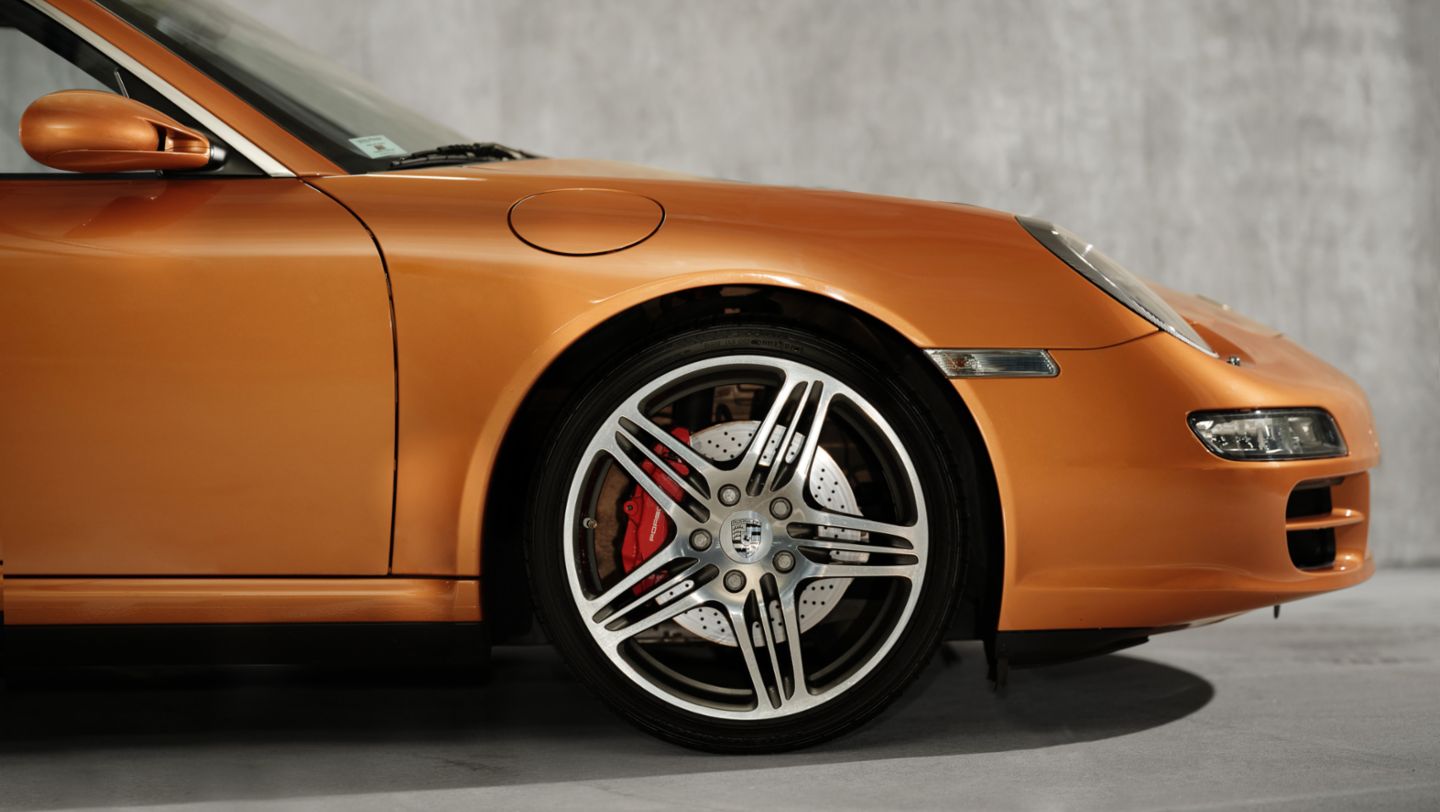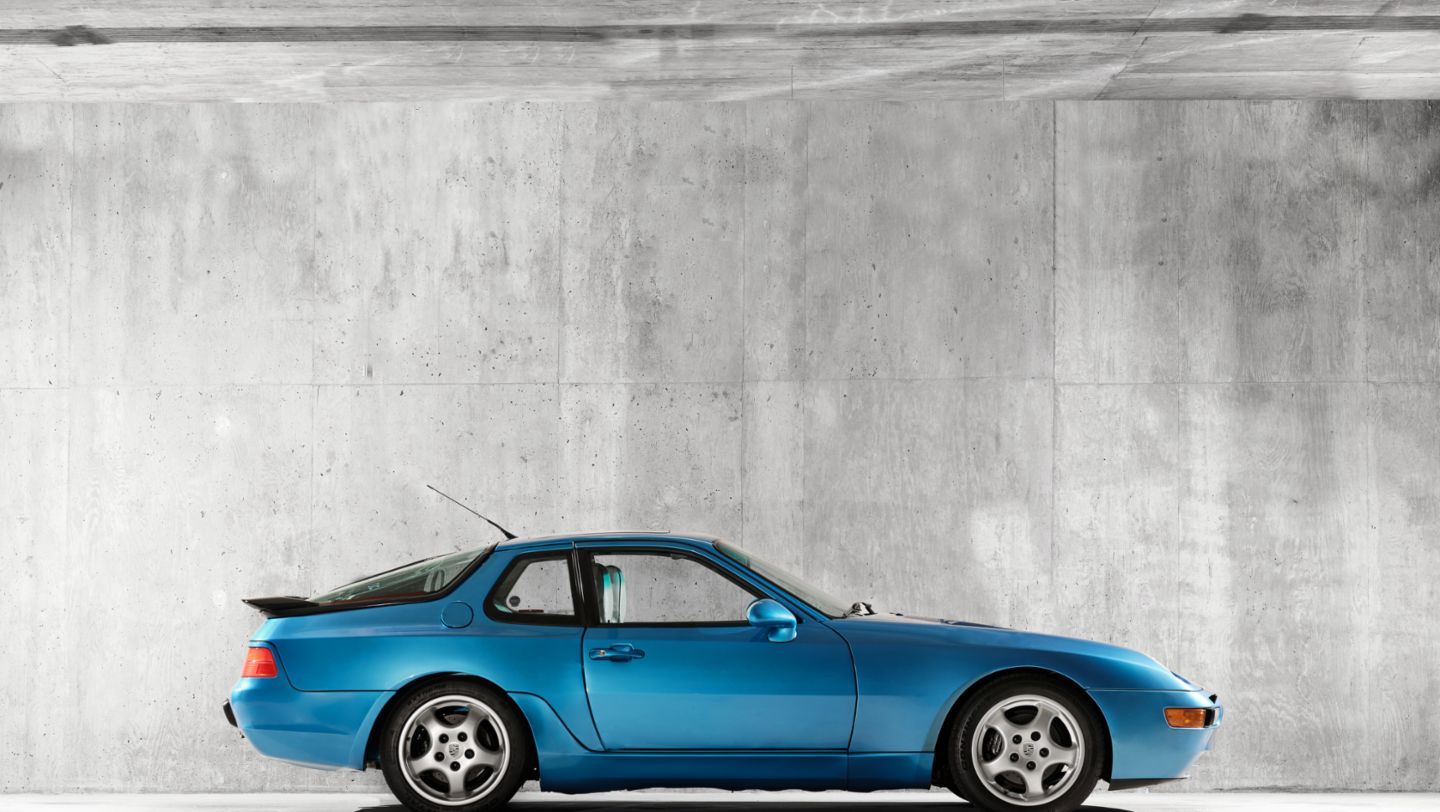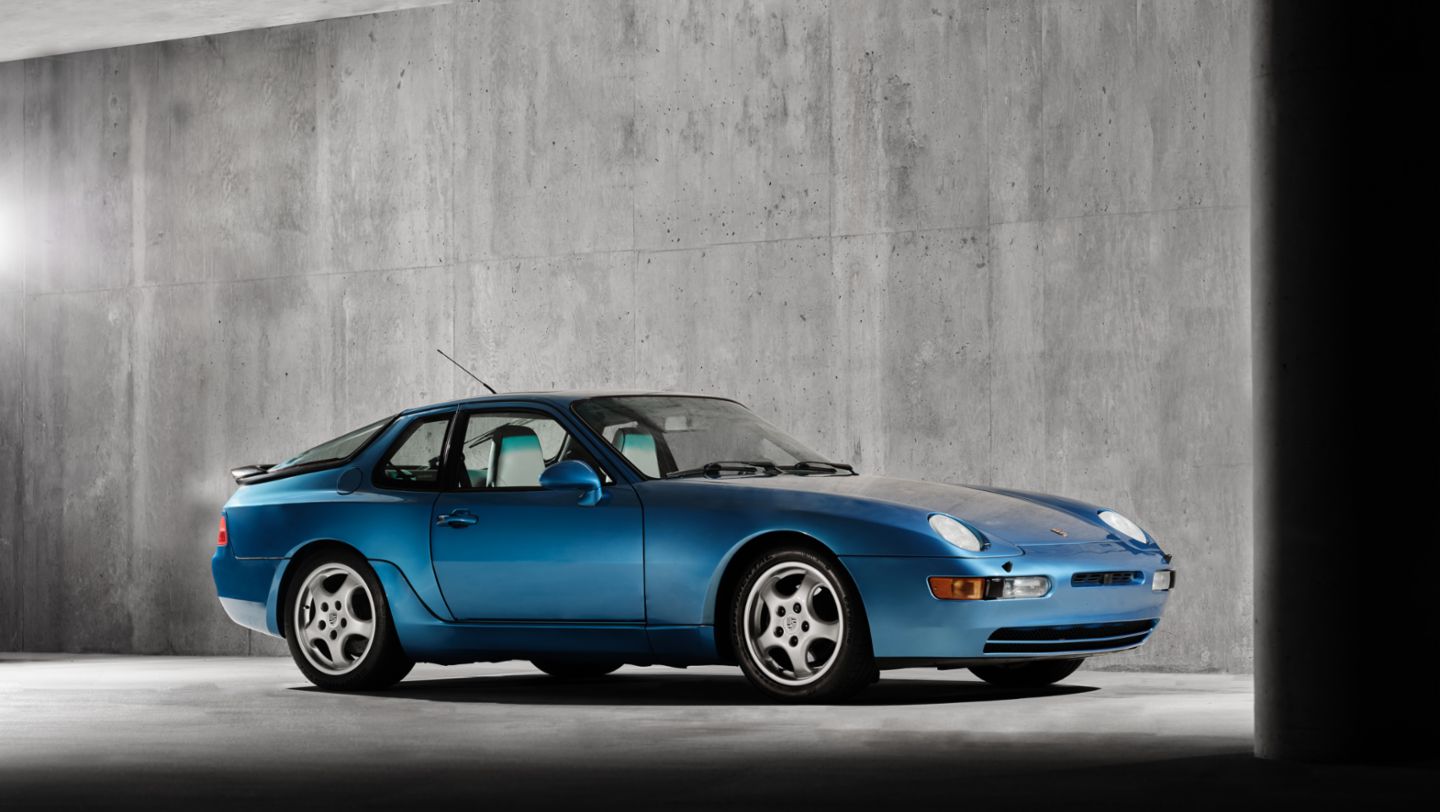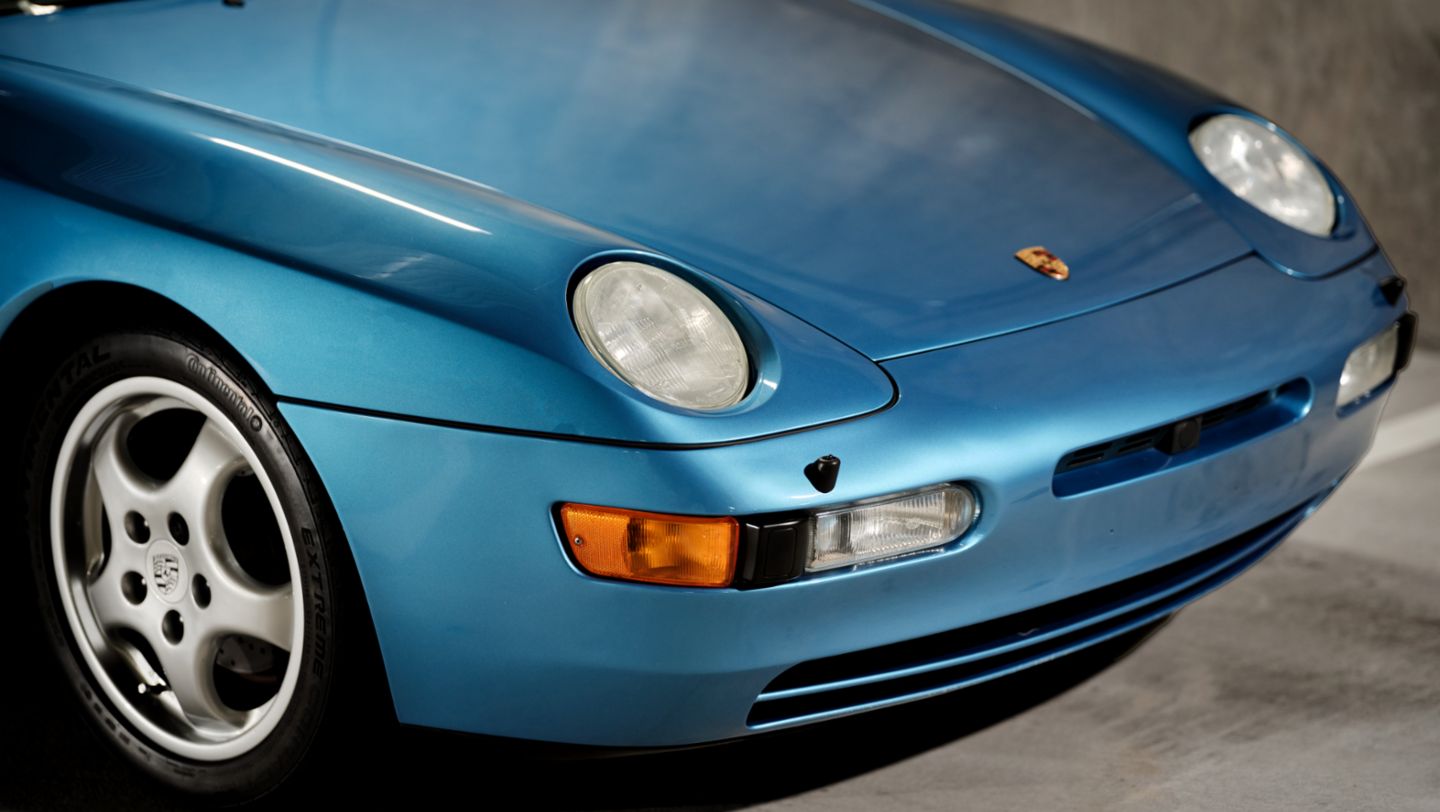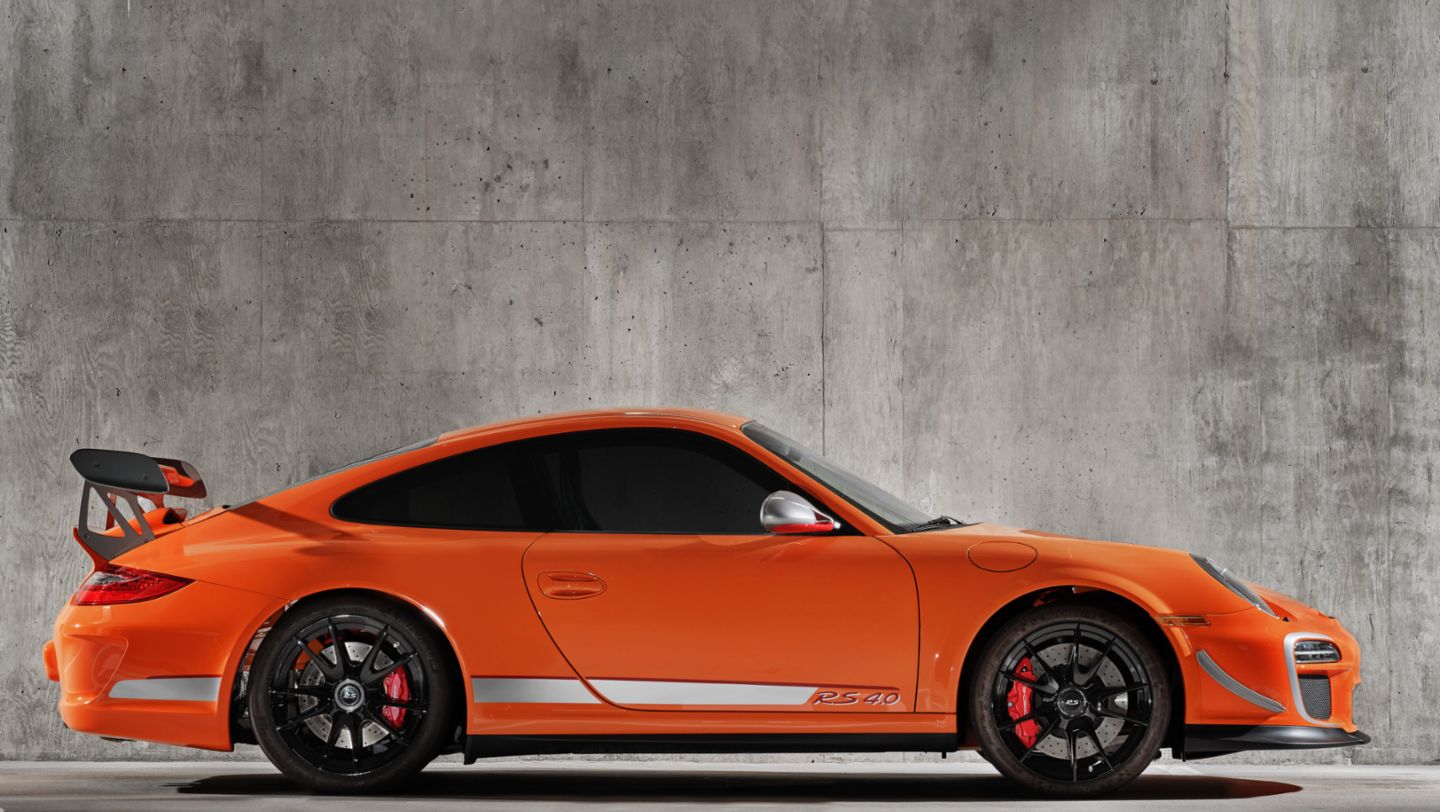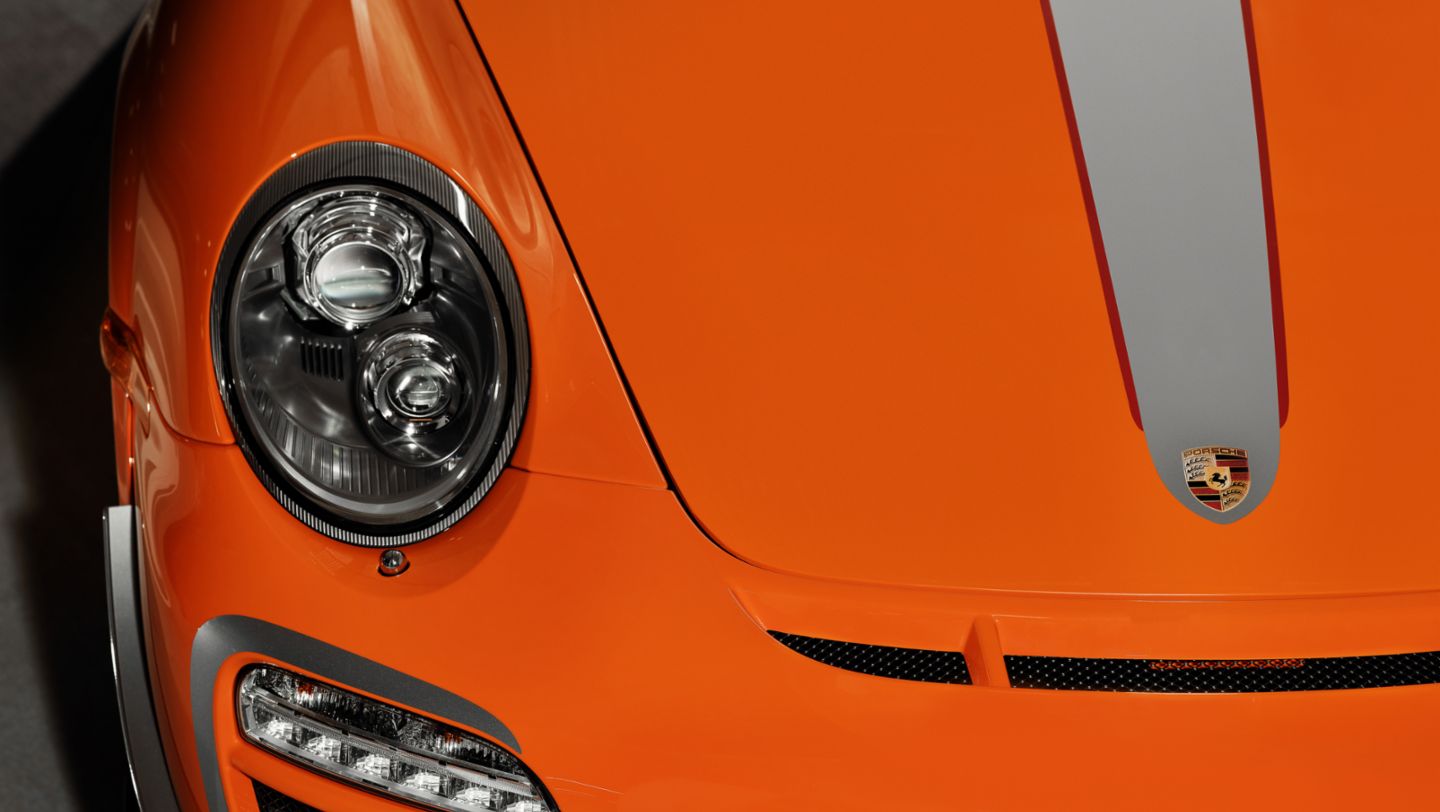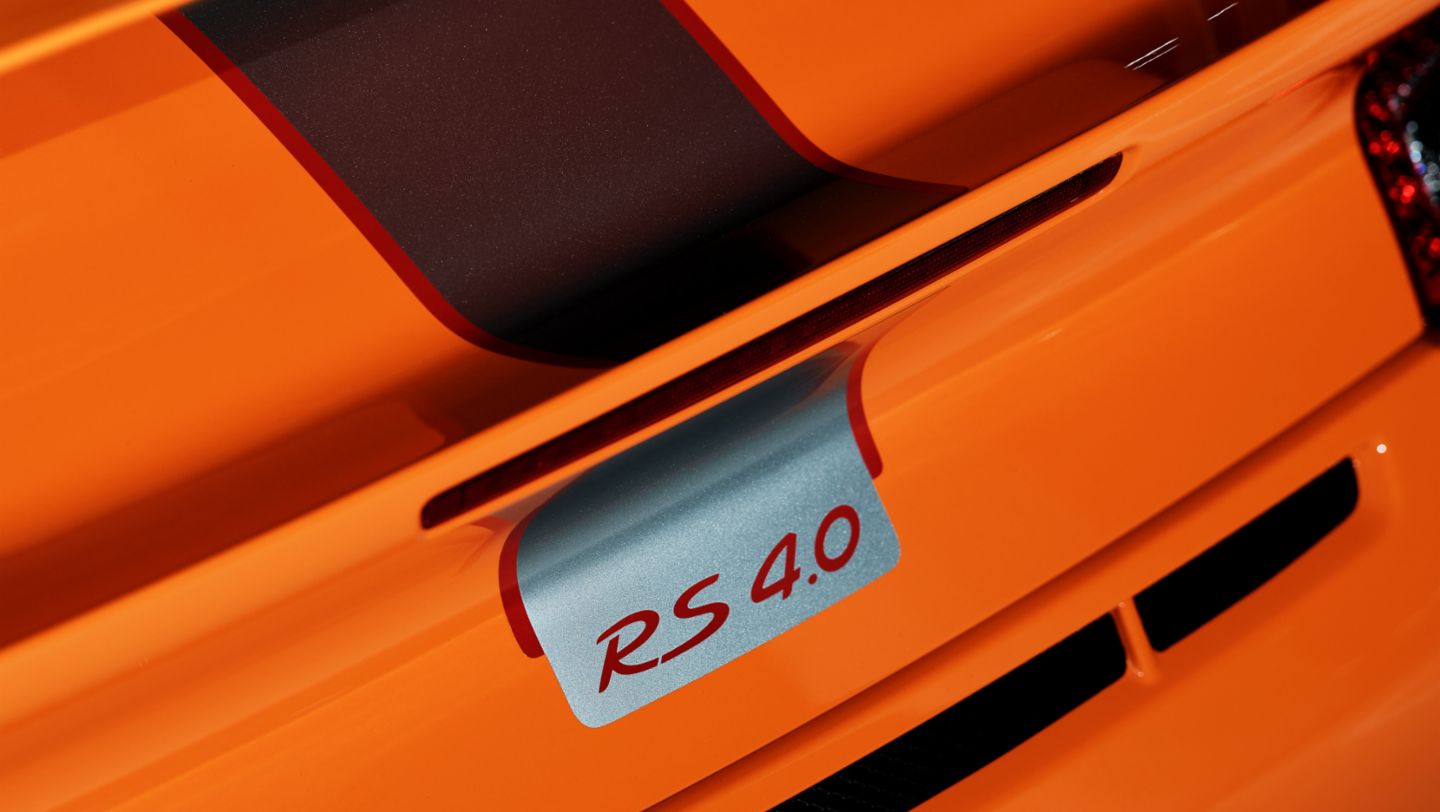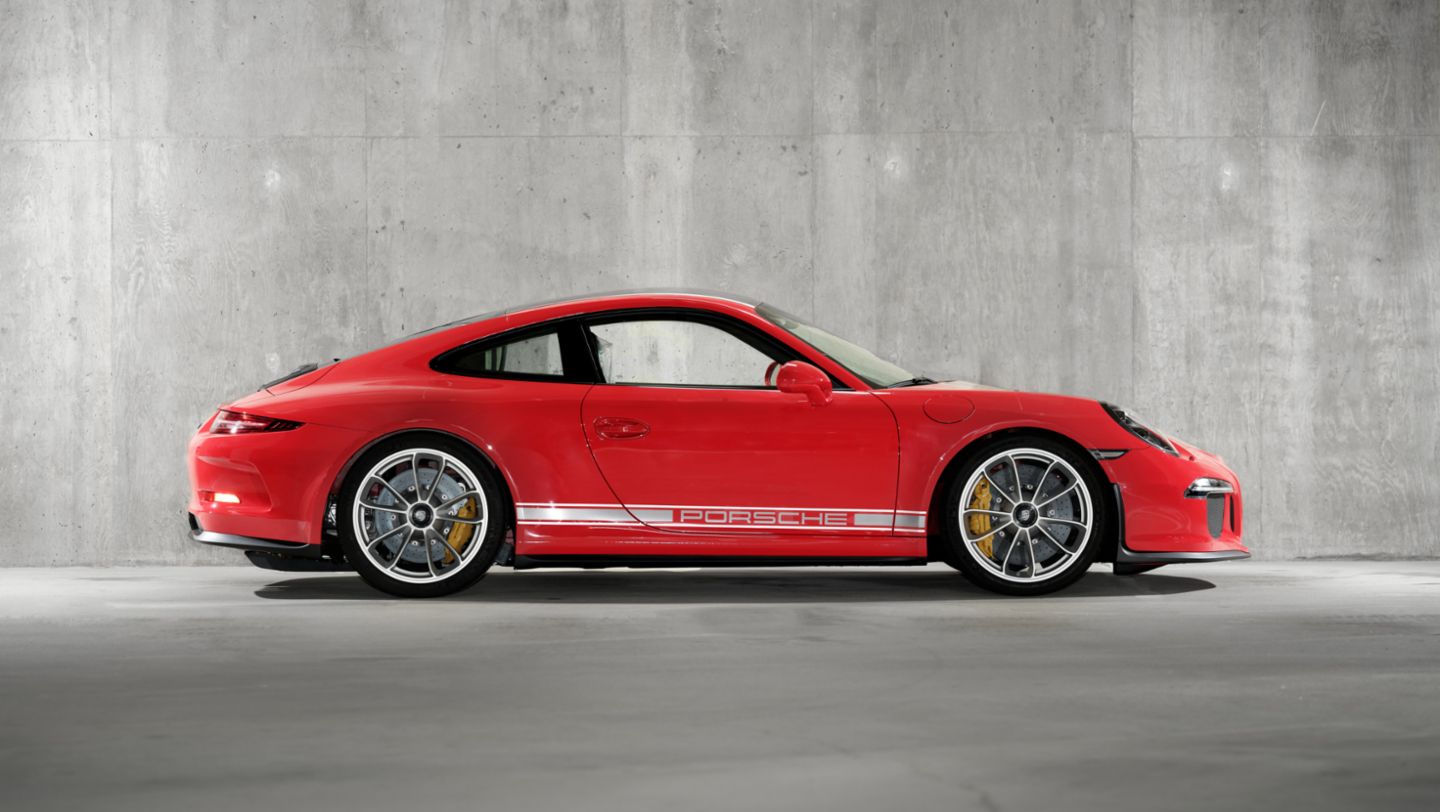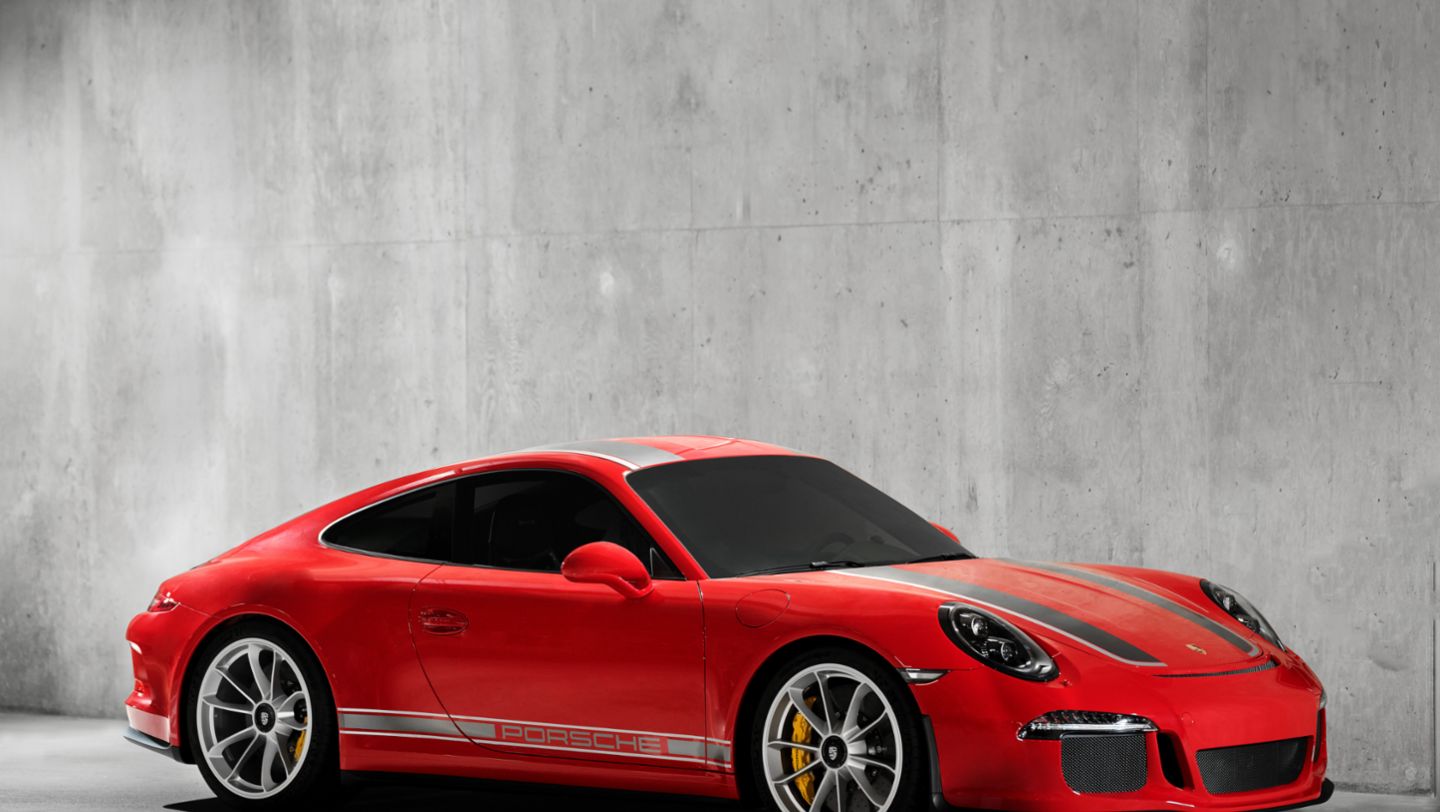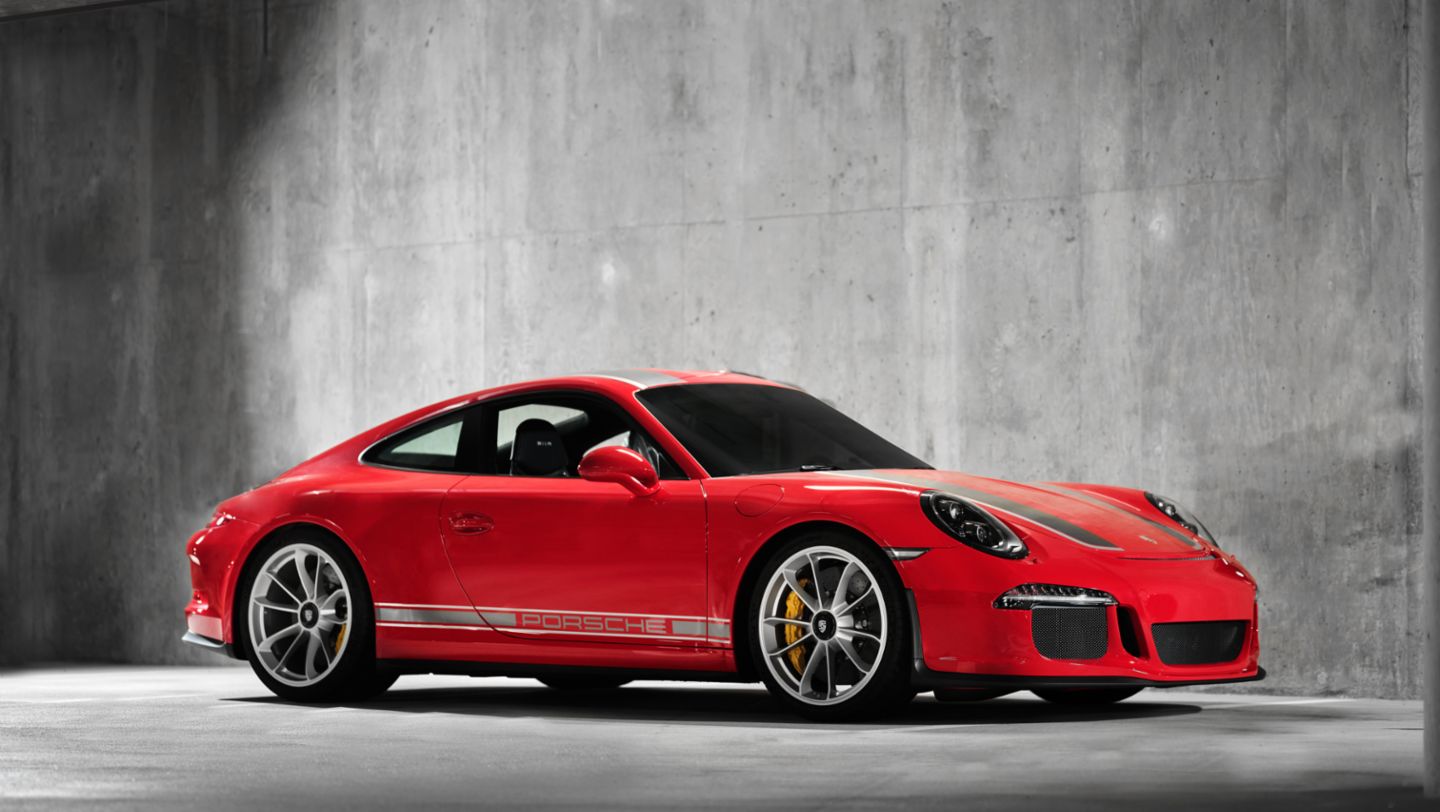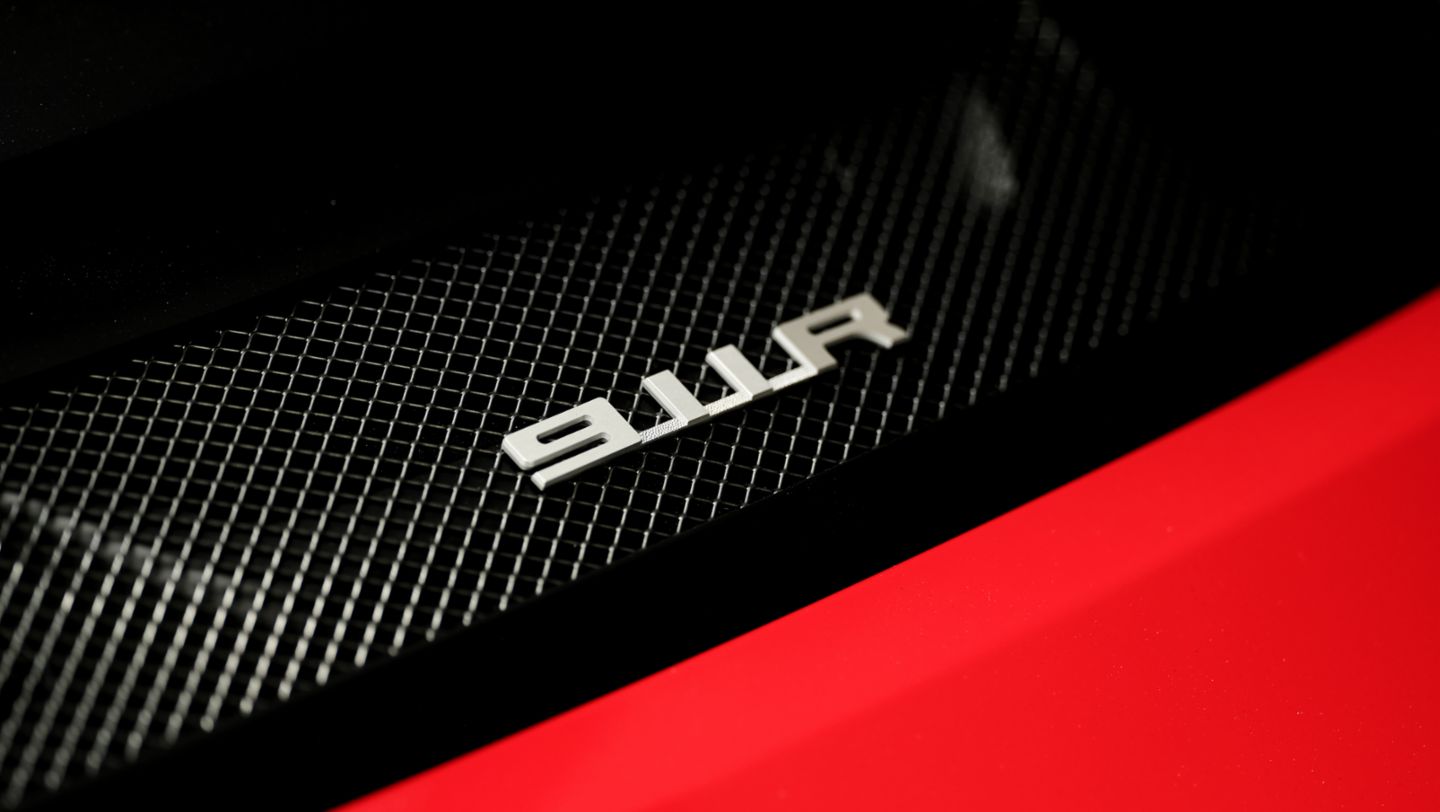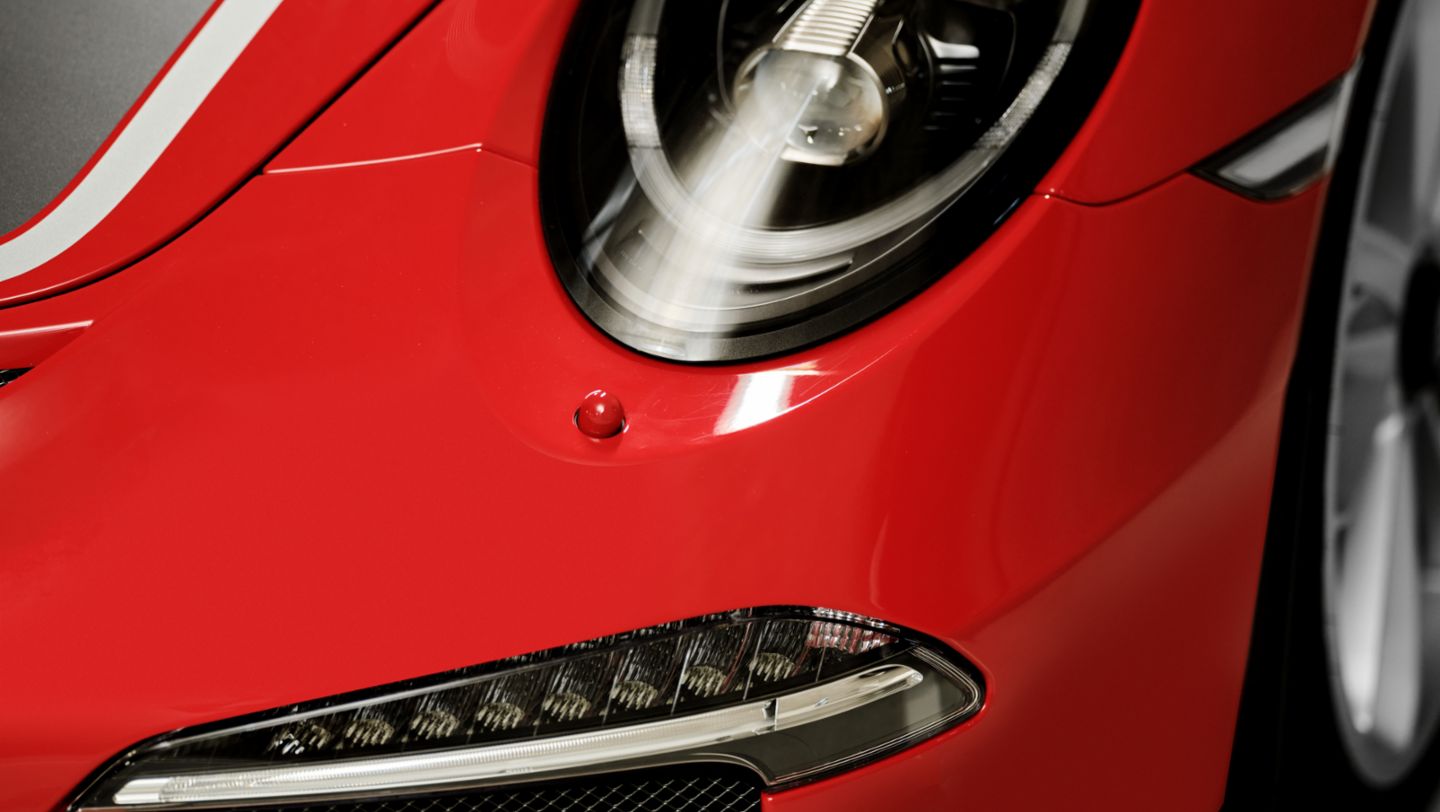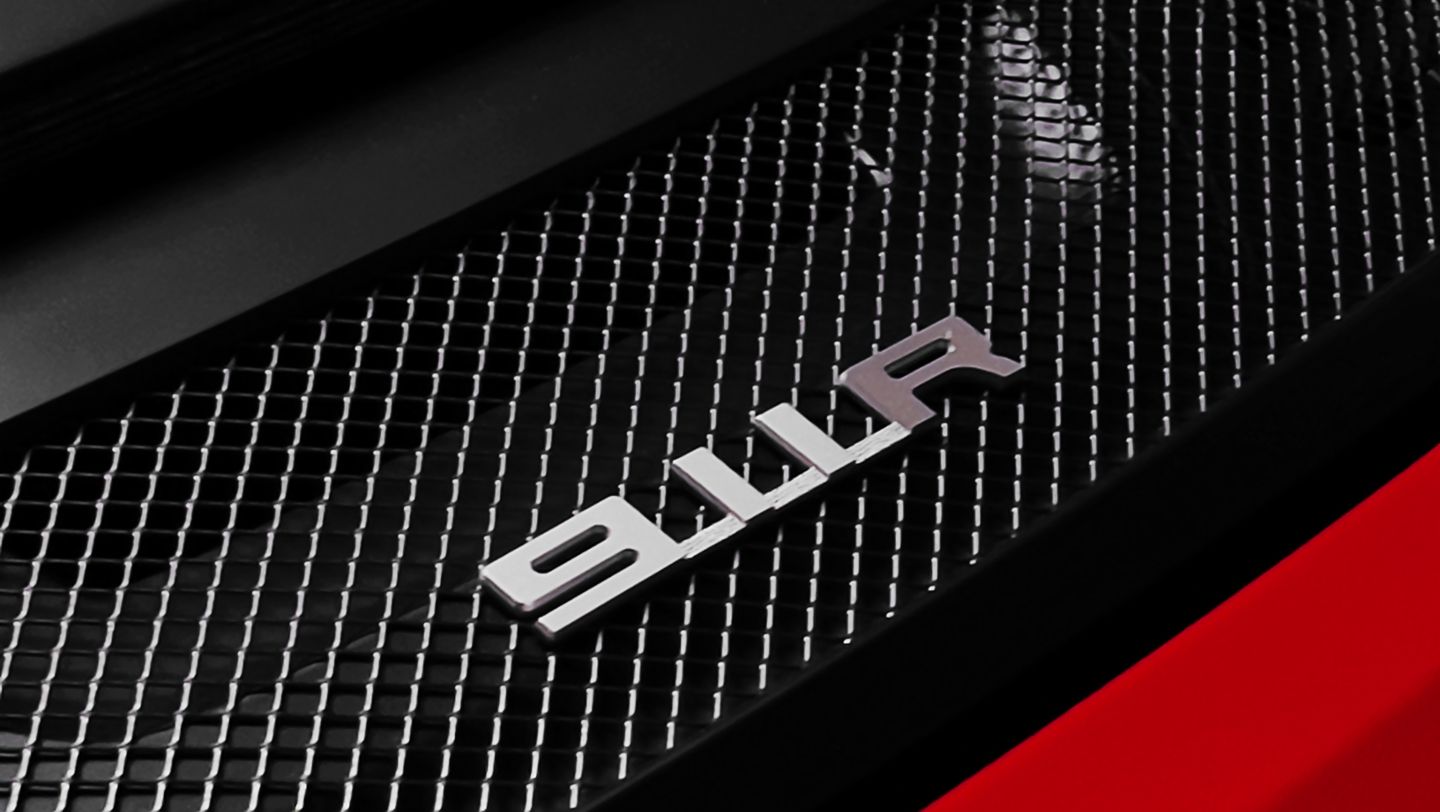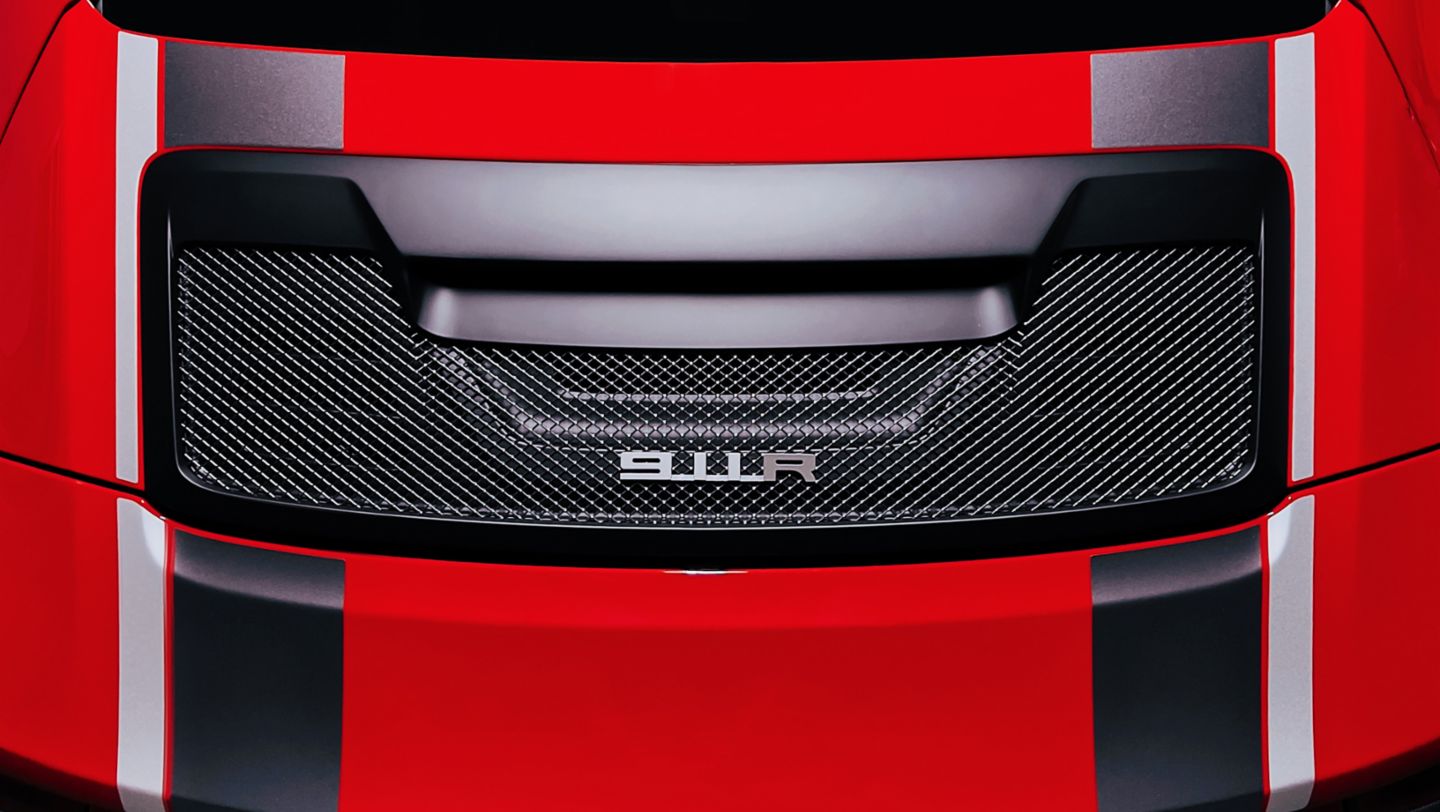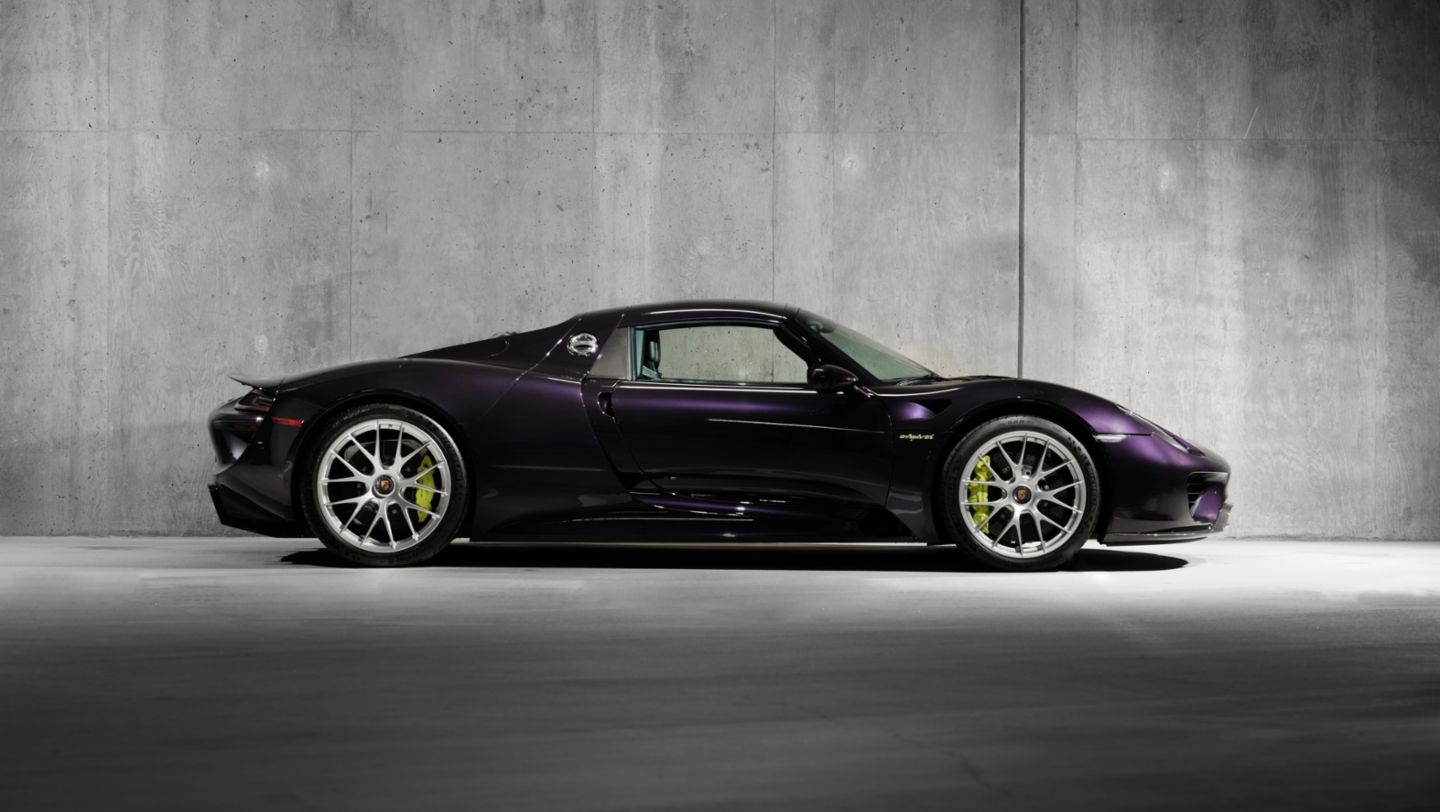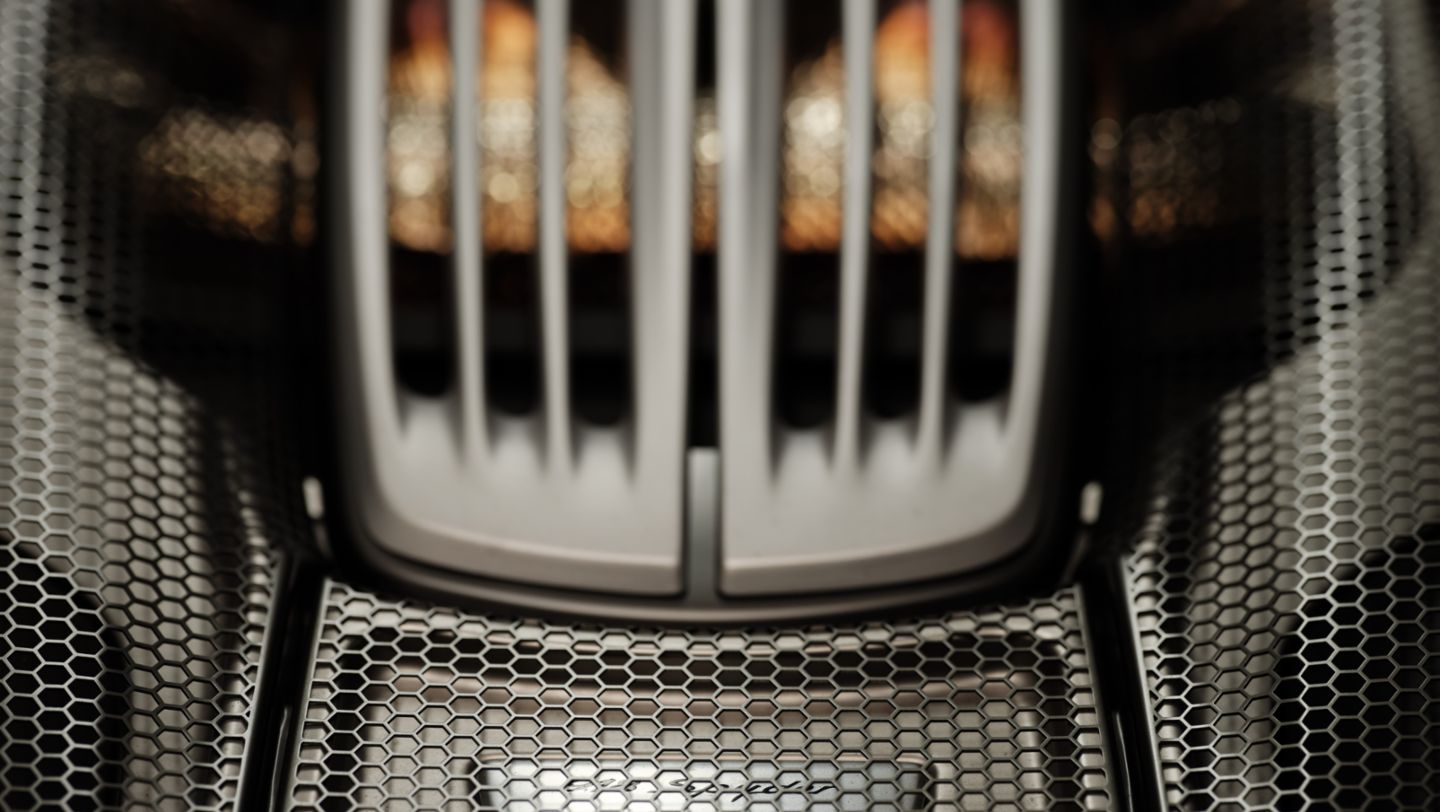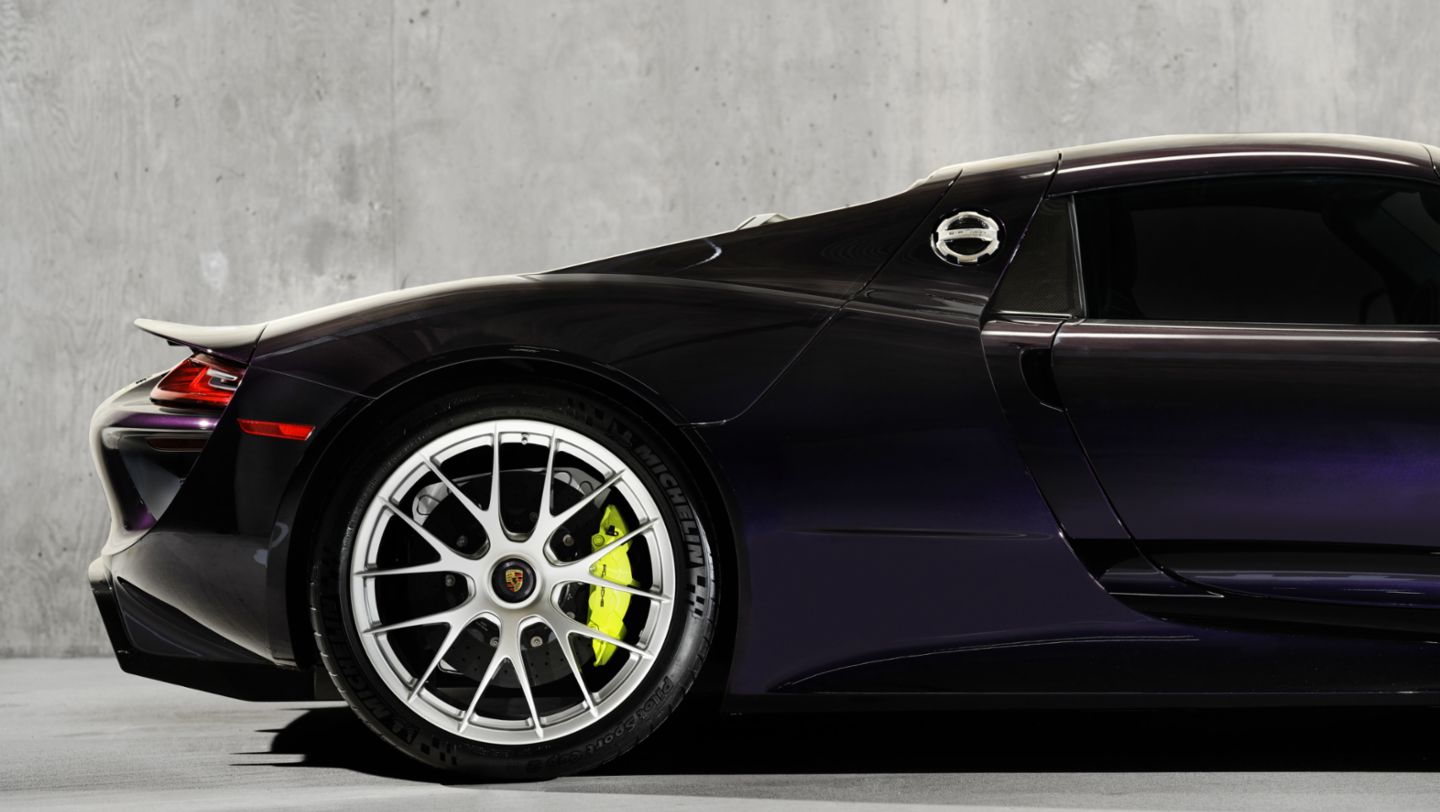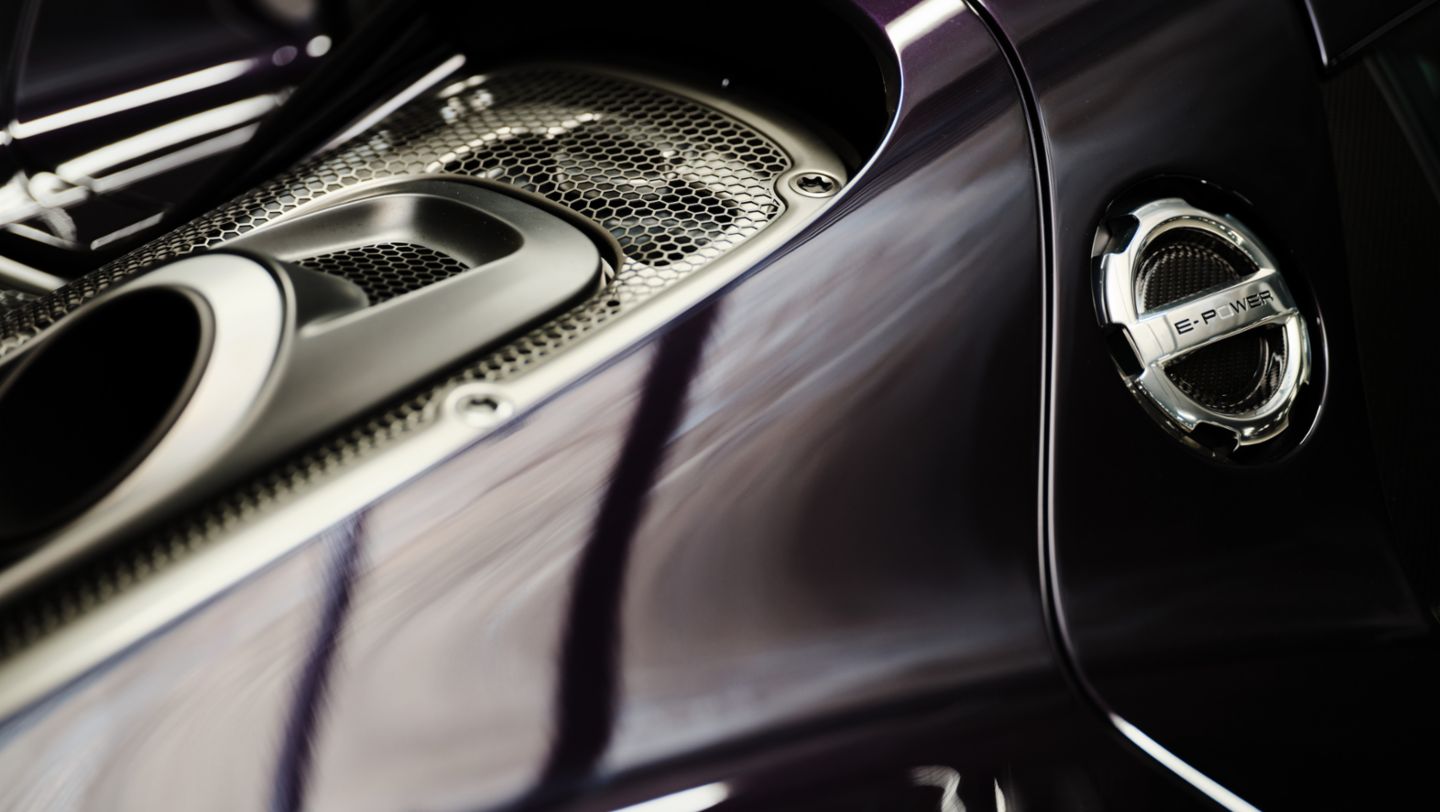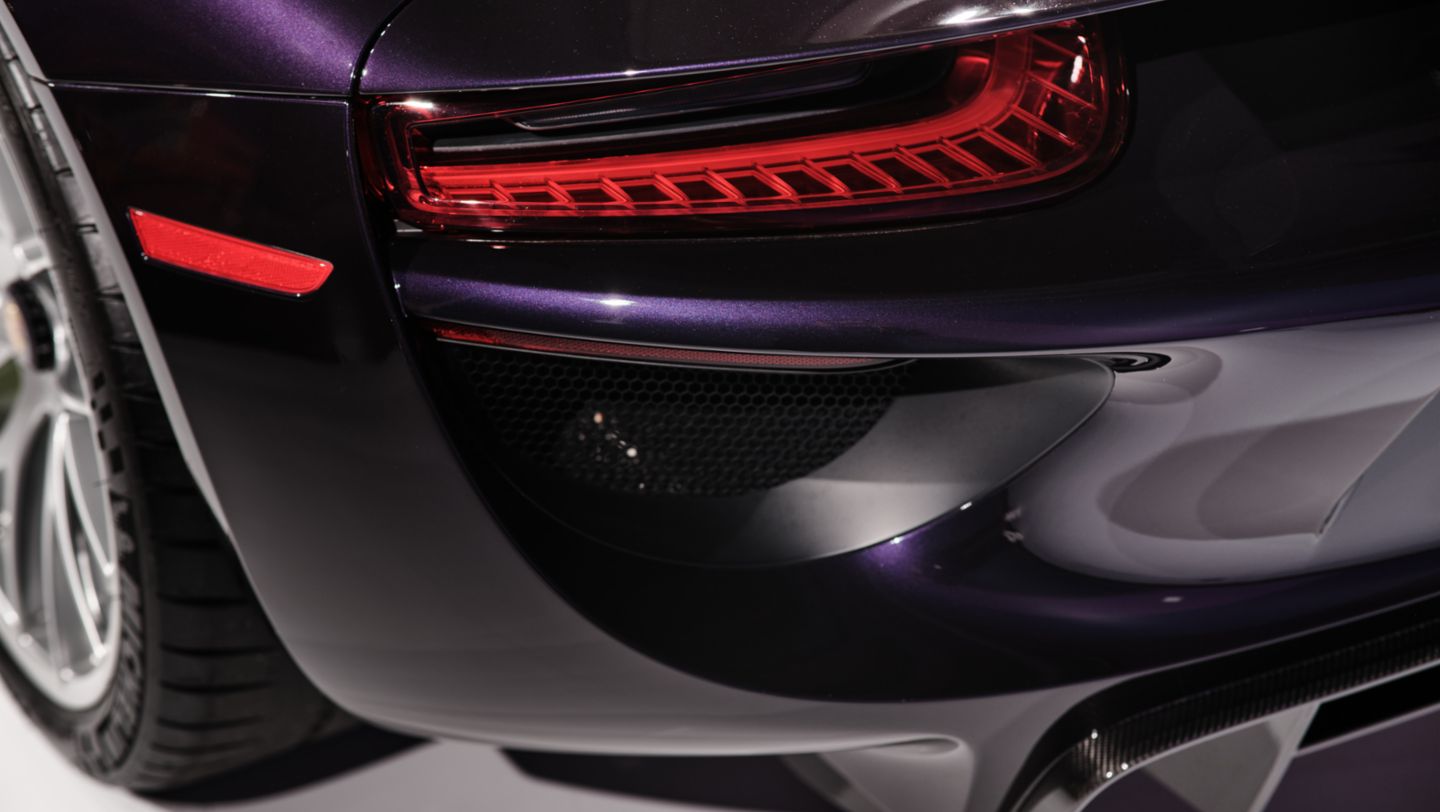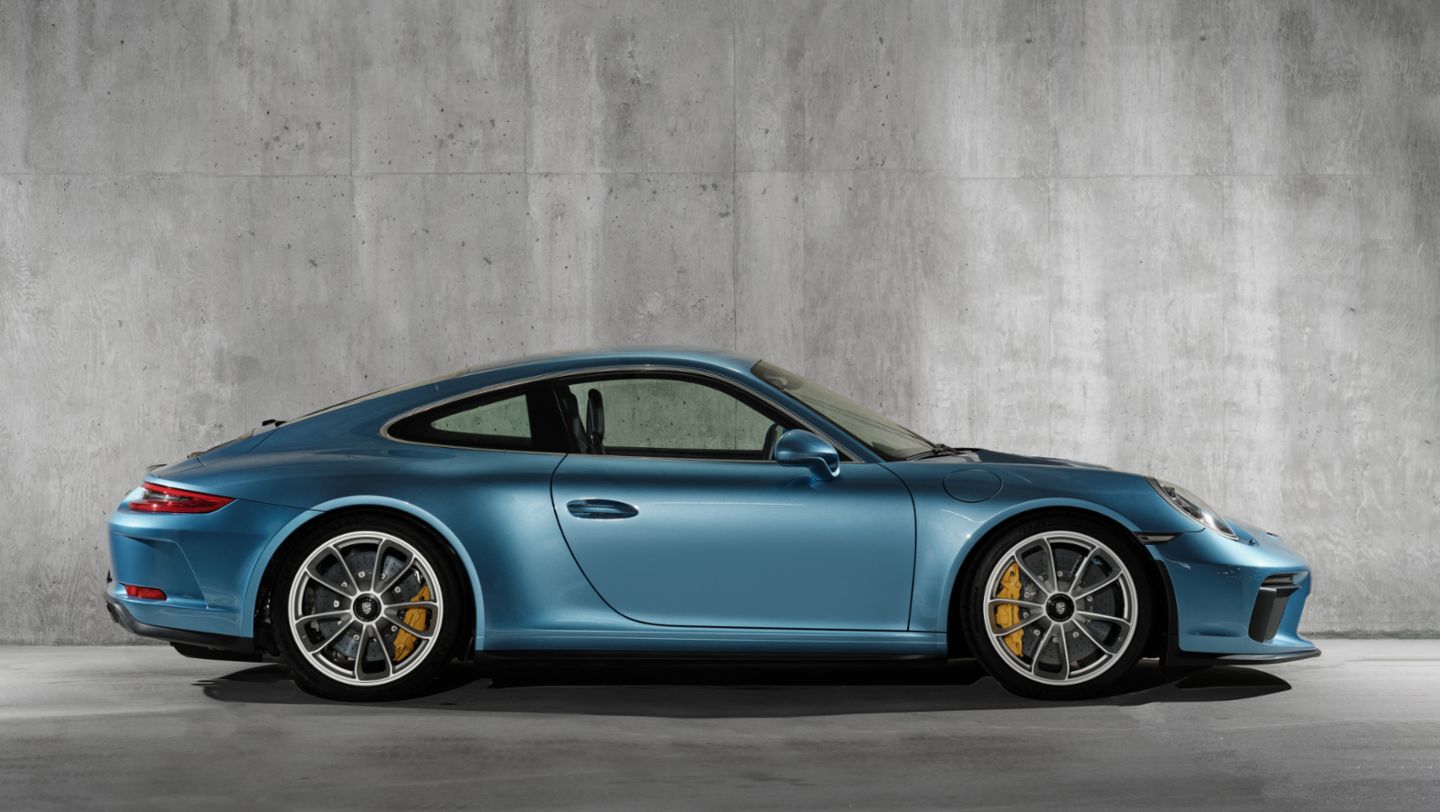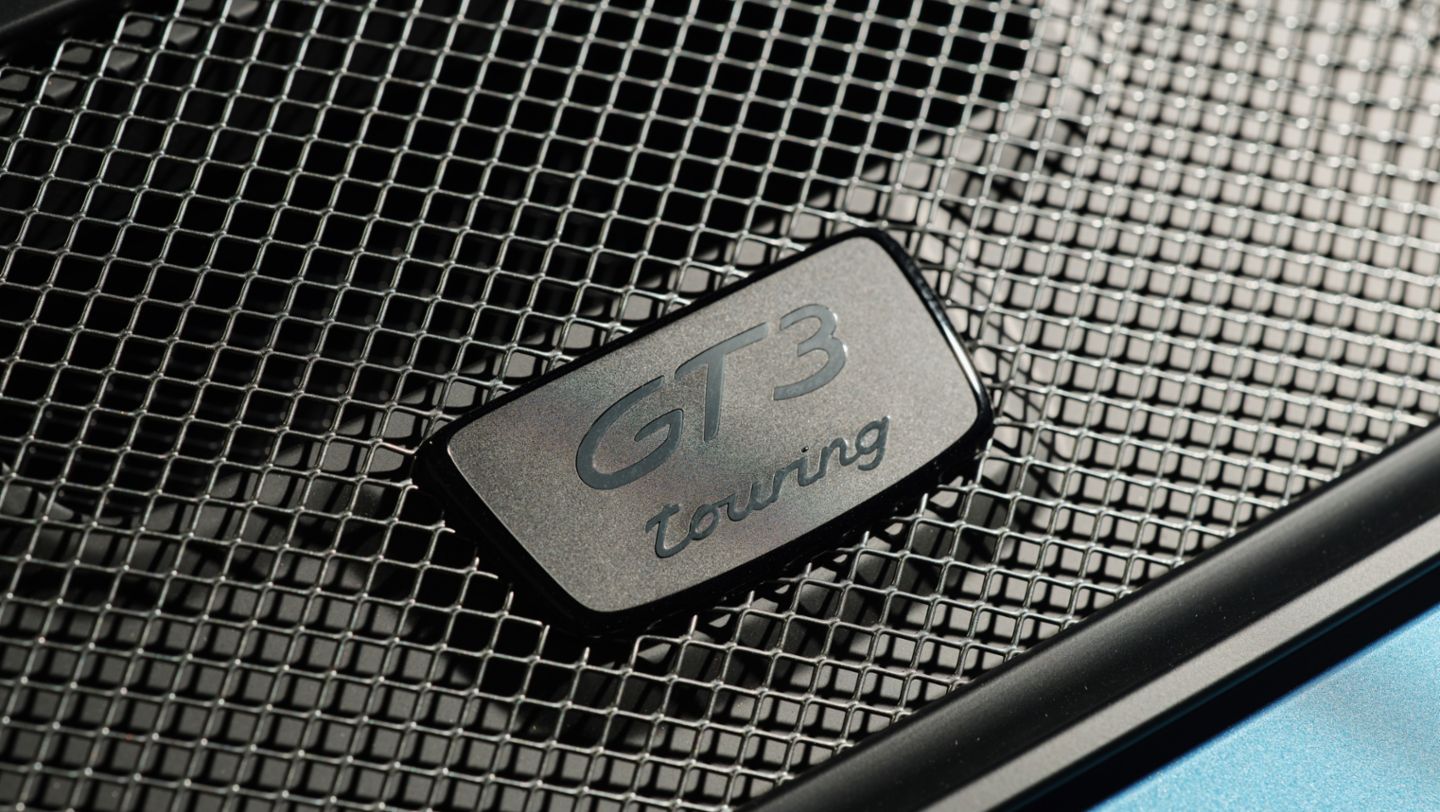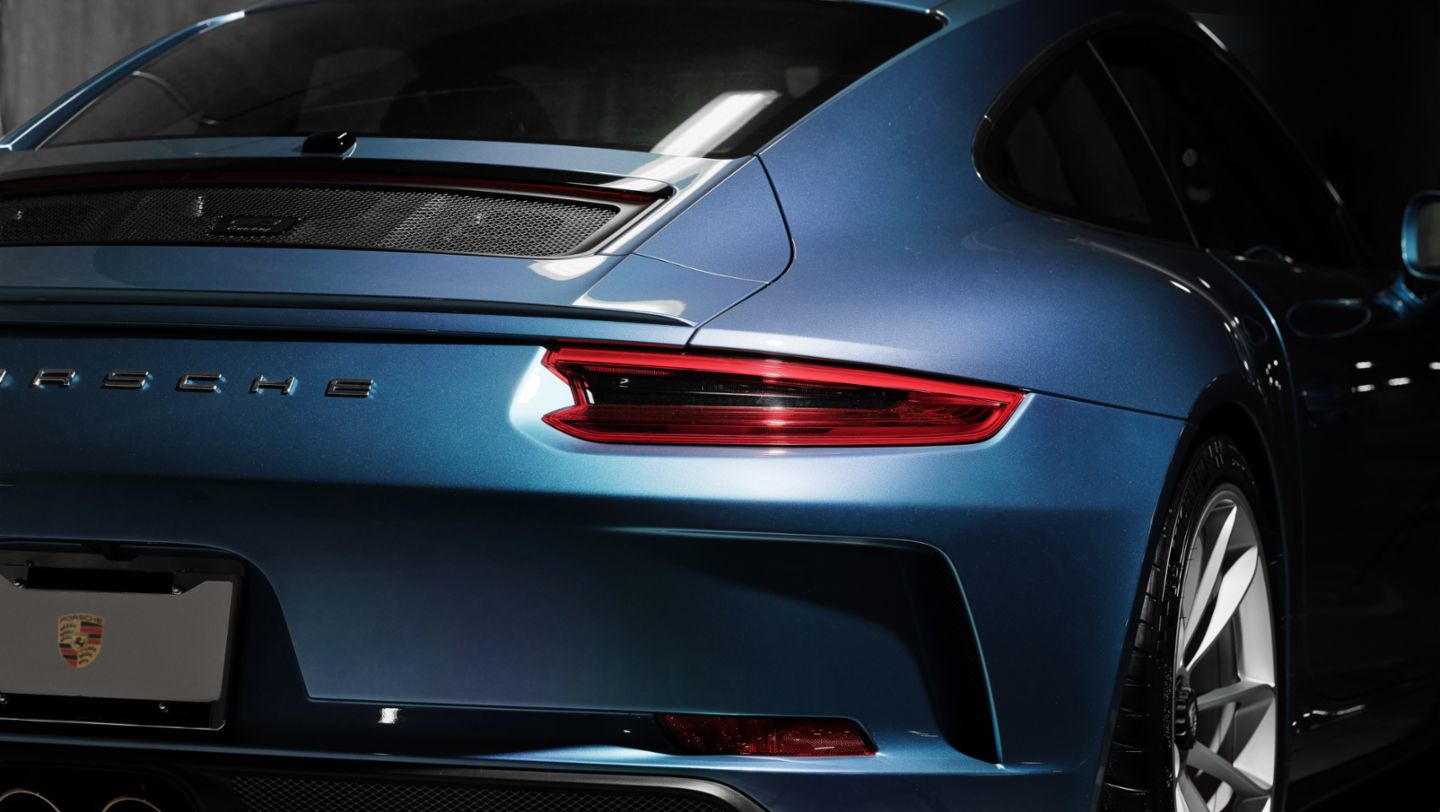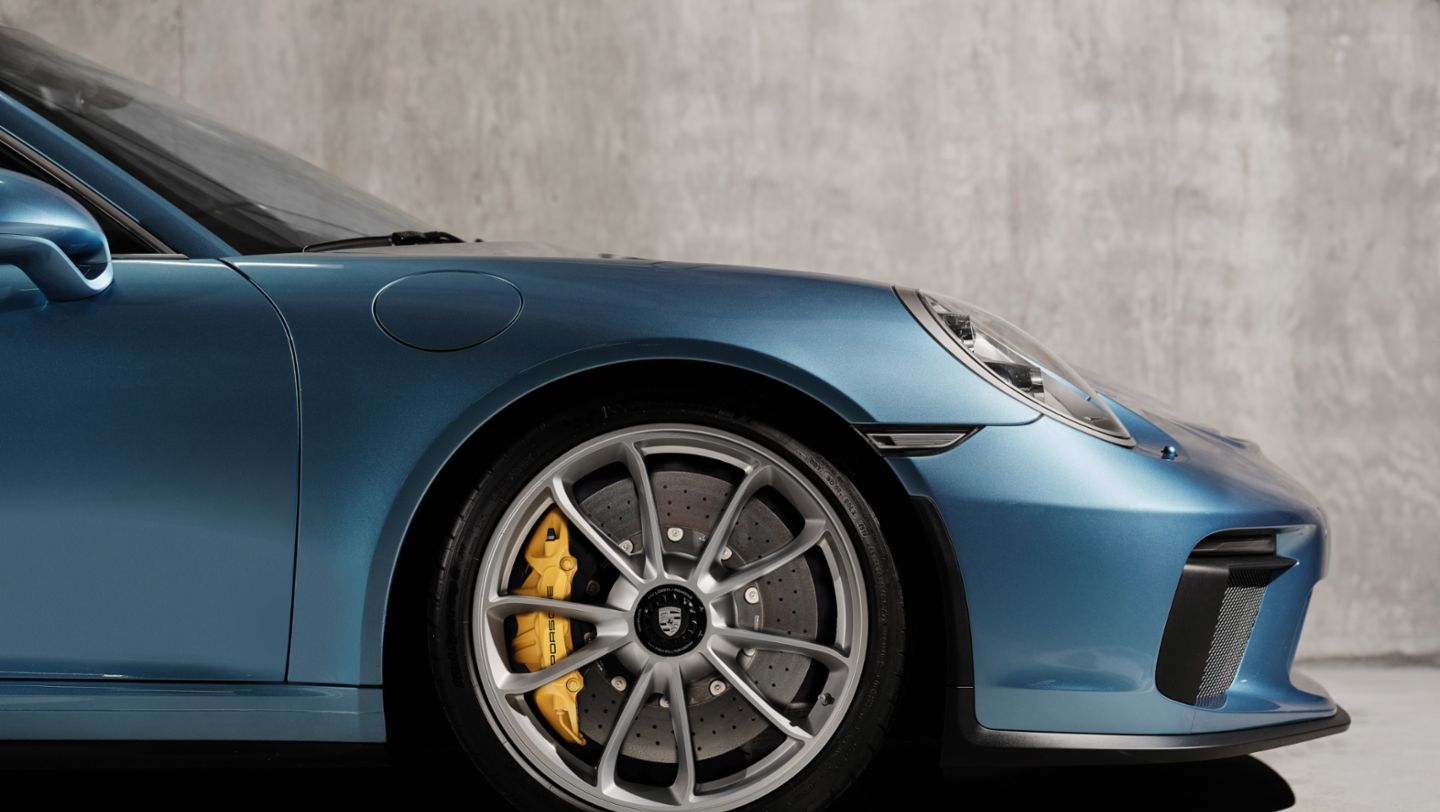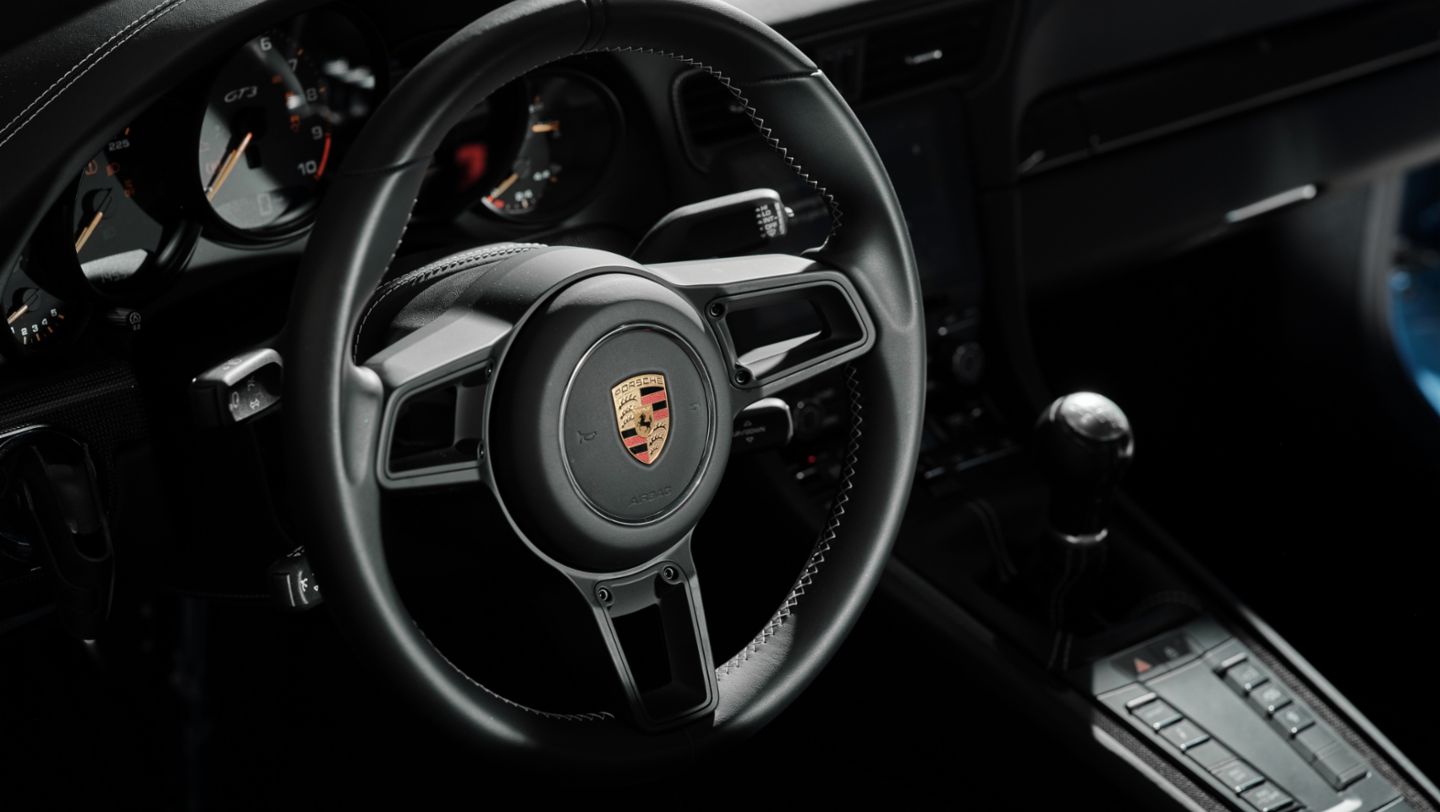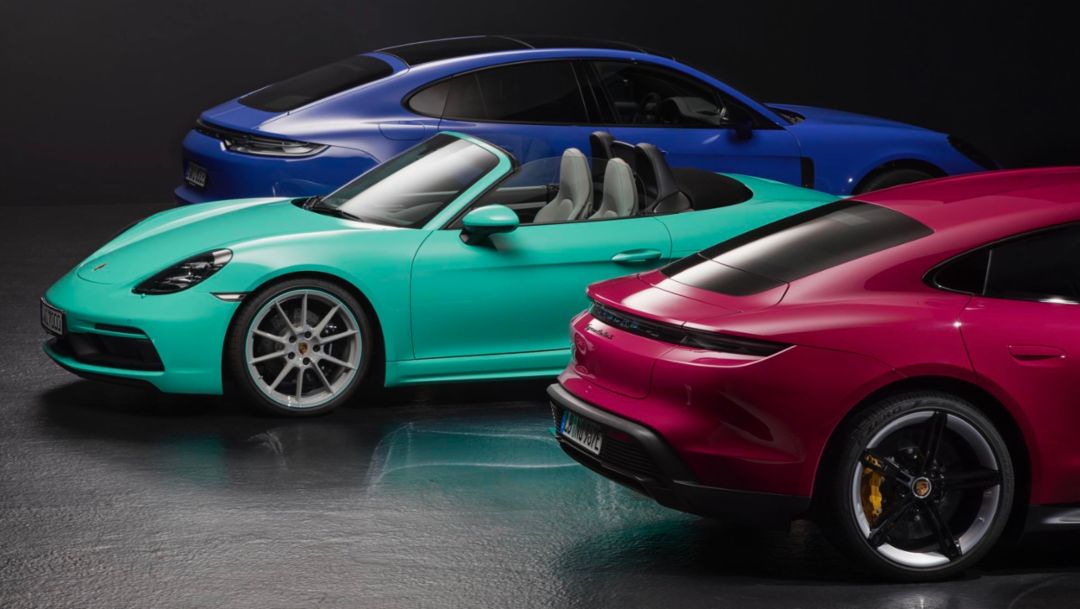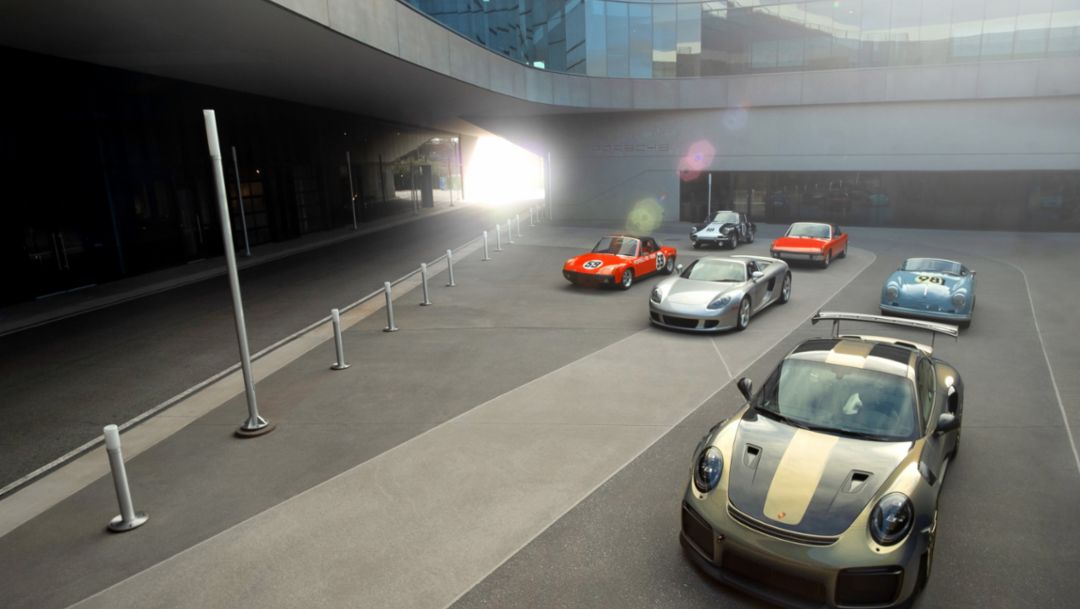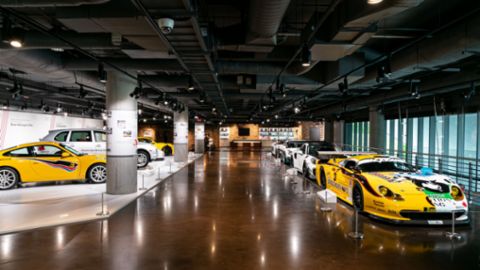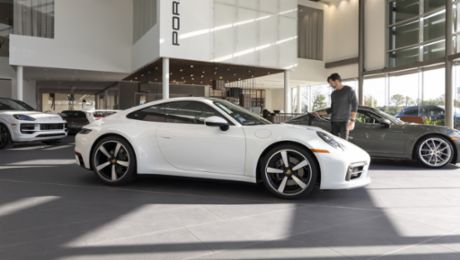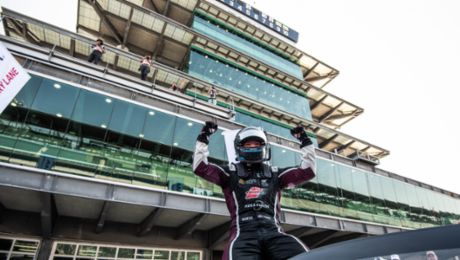A Porsche sports car makes a statement. And while the striking flylines are instantly recognizable and the performance is unrivaled, the right color can make an already exceptional car a true masterpiece. Porsche recognizes the importance of color and always has, appreciating the variations and complexities that separate a Fern Green from an Ocean Jade Metallic. From the beginning, paint has played an integral part in the Porsche story, which is the reason these Colors of Porsche now adorn the Heritage Gallery at the Porsche Experience Center Atlanta.
Through Porsche Exclusive Manufaktur and the Paint To Sample program, not to mention the special colors and rare shades originally made available for limited model years, there is no limit to the imagination when customizing a Porsche. Over the decades, hundreds of unique color combinations have been chosen by customers, a bevy of classic choices from early model lines have become fan favorites, and the factory itself continues to push the envelope of what’s possible from pigments. At Colors of Porsche the modern, metallic and matchless are on full display, showing off a wide spectrum of Porsche Passion.
"Colors of Porsche" is scheduled to be on display through 2022. Interested visitors can view the latest Heritage Gallery display at the Porsche Experience Center Atlanta. Guests are encouraged to book a tour of the facility at porschedriving.com. Cars are subject to change.
1978 911 SC – Fern Green
If you run a furniture store specializing in vintage modern pieces you’ve got an eye for design. It’s partly what draws Mark Fisk to the Porsche brand. That and an unrivaled driving experience.
What drew him to a pristine Fern Green Porsche 911 SC was serendipity. With his passion for Porsche known well amongst his colleagues, Fisk was contacted by an aging owner of a “green” 911 who was no longer able to personally drive the 3.0-liter sports car and wanted to offer it to someone who could enjoy it.
Fisk and his wife had been in the market for a bright color 911 from the 1970s and agreed to meet the owner at her home. The couple and the owner bonded over an afternoon of conversation, and discovered the owner and her husband had purchased the car new and loved every second behind the wheel.
“We felt like we were rock stars in that car,” Fisk remembers the woman saying. And when you’re in a Porsche with a shade as rare as Fern Green with the Targa top dropped, it does feel like the whole world is singing along with your naturally-aspirated songs. Fern Green was available on 1978 Porsche 911 SC and 1978 Porsche 928 models.
Vehicle courtesy of Mark Fisk, Cincinnati Concours Board & Recruiting Committee Member. Transportation by Reliable Carriers, Inc.
1988 911 ”Safari” Carrera – Rubystar (Rubystone Red)
When Leh Keen got his hands on this rear-wheel drive 1988 911 Carrera it looked quite different. For one, it was several inches closer to the road and only had two headlights. It also wasn’t dripping in Rubystar paint.
Keen is a professional racer and also plies his trade in the customization game with his company, The Keen Project. By taking classic 911 sports cars, a strong and durable platform capable of strenuous builds, and converting them to rally specs, Keen makes jaw-dropping vehicles that take air-cooled Porsche performance off-road. Porsche has a storied history of off-road racing success dating back to the 1960s which influenced the decision to begin offering all-wheel-drive variants of the 911. The Carrera 4 debuted with the 911 Type 964 in 1989.
When owner Michael Song was having this Safari example transformed as Keen’s 11th build, his first inclination was to finish it like some of his other Porsche sports cars – GT Silver, Carrera White, Guards Red – but Keen urged him to consider something special.
Song said he always admired the “pink” 911 Carrera RS cover car on issue 92 of Total 911 magazine and Keen, who immediately recognized the shade as Rubystar née Rubystone Red, jumped at the opportunity. From the G-model bumpers down the Fuchs wheels, the Rubystar Safari ride gets overwhelming approval and the occasional tag on Instagram from amateur car spotters when Song drives it around town.
Rubystar first came to prominence in the early ‘90s with the 911 Type 964 and late transaxle models, the Porsche 928 S and 928 GT, and has recently been revived as an option for the 2022 model year Taycan through Porsche Exclusive Manufaktur. Vehicle courtesy of Michael Song. Transportation by Reliable Carriers, Inc.
2018 911 GT2 RS Type 991.2 - Ice Green Metallic
The date is September 20, 2017. It is dry and reasonably cool at the legendary Nürburgring in Germany – excellent conditions for a lap record attempt in the new Porsche 911 GT2 RS. 6:52:01 minutes is the record to beat for a 12.8-mile lap of the legendary Nordschleife in a street-legal sports car with road-approved tires. The RS in the designation of the Porsche stands for “RennSport,” German for motorsport or racing. The 911 GT2 RS is the most powerful road-legal 911 to date and the plan is to break the record. The performance is there: Two turbochargers pump the 3.8-liter displacement of the six-cylinder engine full of densely packed oxygen molecules. 700 hp and 553 lb.-ft. are transferred to the rear axle via a seven speed double-clutch transmission and propel the 911 from 0-60 mph in 2.7 seconds, up to a top track speed of 211 mph. The adjustable sports chassis, standard ceramic brakes and model-specific aerodynamics generating up to almost 1,000 lbs. of downforce at top track speed round off the race-bred car, which weighs approximately 3,241 pounds when equipped with the optional Weissach Package.
The GT2 RS lives up to its name. The timing equipment shows 6:47:3 minutes after a flying lap. The result is a breathtaking average lap speed of 114 mph – and a new record at the time.
Before you is a 2018 Porsche 911 GT2 RS crafted to custom factory specifications through Porsche Exclusive Manufaktur and finished in Ice Green Metallic. This particular hue debuted as a special color for the 911 in the mid-1970s and has color-shifting properties like so many other Porsche paints. Minty green comes through most in low light, like prepping in a paddock, but when in motion under the sun it’s strongly silver, like Germany’s official racing color. Vehicle courtesy of the Ingram Collection. Transportation by Reliable Carriers, Inc.
2007 911 Targa 4S Type 997.1 – Nordic Gold Metallic
With the right stimulus, the mind can be transported to another place stored deep in its psyche. When a stimulating Porsche 911 Targa 4S is painted in Nordic Gold Metallic, it can conjure a rich tapestry of memories straight from a bygone era.
Nordic Gold is the spiritual successor to the Gold Metallic hue of early 1970s Porsche 911 and 914 sports cars. Not unlike how the boxer engine has evolved from 155 hp with 2.2-liter of displacement in a 1971 911 to 355-hp and 3.8-liters in this Type 997.1 example, the color also saw adjustments over time. More red tones come through in Nordic Gold Metallic paint, and the retractable panoramic glass roof cuts a bold contrast down to the rear deck lid. Nordic Gold was also a special color for the 2009 Porsche Boxster.
Starting with this model year and the 997 generation, 911 Targa sports cars have only been offered with all-wheel-drive systems. Vehicle courtesy of Elton Darby. Transportation by Reliable Carriers, Inc.
1993 968 – Tahoe Blue
Close to a quarter of all new Porsche sports cars sold in the United States are delivered in California. The German marque’s roots are deep in the Golden State. As deep as the waters of its most famed lake.
Tahoe Blue Metallic, as seen here on a 1993 Porsche 968, shifts in hue with light changes, not unlike its namesake body of water. When fully exposed, the turquoise qualities of the paint come through. In low light, the blue more closely reflects like royal.
The Porsche 968 was the last front-engine Porsche produced until the Cayenne was introduced in 2003 and used an updated 3.0-liter inline-four cylinder engine from the Porsche 944 producing 237 hp. It was capable of reaching a top track speed of 157 mph, and while the 0-60 mph time is north of six seconds is easily eclipsed by modern sports cars, the 50/50 weight distribution of the transaxle series 968 made it agile through the curves and a spirited driver.
Tahoe Blue Metallic was a special color for the 911, 928 and 968 model lines for two years in the early 1990s. Vehicle courtesy of Jennifer Barrows. Transportation by Reliable Carriers, Inc.
2011 911 GT3 RS 4.0 Type 997.2 - Pastel Orange
Gulf Orange and Signal Orange may have more name recognition, but for a paint choice that has only ever been available through Porsche Exclusive Manufaktur’s Paint to Sample program, Pastel Orange has carved out its own place amongst the GT crowd.
In 2011, Porsche unveiled its first special edition GT with the 911 GT3 RS 4.0. Borrowing components from the 911 RSR race car of its day, the RS 4.0 had a higher displacement than the Type 997.2 3.8-liter RS and turned out 11% more horsepower bringing its output to 500 hp. It was the final 911 model to feature a flax-six boxer engine designed by Hanz Mezger, famed Porsche engineer who also helped develop the Porsche 917 racer, and production was limited to 600.
A 193 mph top track speed was not any faster than the standard RS, however, it was an entirely different experience behind the wheel. The 911 GT3 RS 4.0 is able to stand out from other similar models like how the lighter shade of Pastel Orange is able to differentiate itself from the crowd of other colors. Vehicle courtesy of Ayman Naysar. Transportation by Reliable Carriers, Inc.
2016 911 R Type 991.1 - Fire Red
When it was first unveiled in 2016, the Porsche 911 R was immediately deemed “the purist’s Porsche” for its manual transmission, naturally-aspirated 500-hp engine and elegant looks. It was only the second 911 to ever receive the “R” badging, a tribute to the lightest production model 911 ever made, the 1968 Porsche 911 R. Like its forbearer, the 2016 version was also limited, with 991 editions manufactured compared to 20 “R” sports cars built in1968, none of which were ever made available to the public.
The 2016 911 R was the final Type 991.1 produced in Zuffenhausen before the 911 was refreshed for the 2017 model year and Type 991.2 generation. It aimed to take the same performance available on the 911 GT3 and tone down the track-focused elements for a more refined appearance. Both the Type 991.1 R and GT3 could reach a top track speed of 200 mph.
Colm Campbell knew when Porsche revived the R moniker it would only be reserved for a special car, so he dug back through the history books for an inspiration on the color. The 911 R made its racing debut in July 1967 at the “Circuito del Mugello,” with drivers Vic Elford and Gijs van Lennep taking an excellent third place overall. Elford would connect with Campbell during his process and shared decades of driving experience and coaching, furthering Campbell’s own passion and cementing Fire Red as his choice, an homage to the prototype driven by Elford 40 years before. The majority of 911 R sports cars were finished in Pure White with optional red or green graphics packages.
Because of the 2016 Porsche 911 R’s overwhelming popularity among drivers, the GT3 Touring trim was introduced in 2017. Like the R, the GT3 Touring removed the fixed wing of the GT3 and added creature comforts to the interior without sacrificing performance. Vehicle courtesy of the Colm Campbell. Transportation by Reliable Carriers, Inc.
2015 918 Spyder - Viola Metallic
The 918 Spyder represented the pinnacle of Porsche's lineup of plug-in hybrid vehicles when it was launched. Its engine stems from the LMP2 RS Spyder race car, while the hybrid drive was developed based on experience gained from the successful 911 GT3 R Hybrid race car and Porsche hybrid production vehicles. This is proof that Porsche's extensive involvement in motor racing is not only a vital ingredient that furthers the manufacturer's road cars' performance, but also a valuable proving ground for efficiency-boosting technologies of the future.
Just as electric as the 918 Spyder powertrain is the Viola Metallic hue that adorns the body work. Owner Bob Ingram chose the color for its ability to accent the lines of the sports car exceptionally well, with the bold purple tone bringing out blues in the recessed angles. Acid Green badging and brake calipers add a pop and offset the deep metallic jewel tones. Viola Metallic debuted as Viola Blue Metallic, veilchenblaumetallic, in 1990 on Porsche 911 and 928 models.
By pairing the race-bred 4.6-liter V8 engine mounted in front of the rear axle that revs up to 9,150 rpm with two electric motors - one at each axle – the 918 Spyder generates a total of 987 hp. Accelerating from 0 to 60 mph in just 2.5 seconds, reaching a top speed of 214 miles per hour and lapping the famed Nürburgring Nordschleife race track in 6 minutes and 57 seconds, the 918 Spyder combined unparalleled performance and handling with 21st century sustainability.
The only issue with its track capabilities is not being able to better appreciate the Viola Metallic paint as it races by. Vehicle courtesy of the Ingram Collection. Transportation by Reliable Carriers, Inc.
2019 911 GT3 Touring Type 991.2 - Azurro California Blue
A Porsche 911 GT3 Touring can be called a wolf in sheep’s clothes. However, painting one in Azurro California will be calling all the attention right back to you.
The first time Porsche offered the color was on a special edition 2006 Porsche 911 Carrera S Club Coupe celebrating Porsche Club of America's 50th anniversary. The Club Coupe was only available for PCA members and only 50 were produced. Azurro California took inspiration from Azure Blue, a popular option for early 1955 and 1956 Porsche 356 sports cars, and for some time could not be optioned by the general public. Over time the blue hue was added to Porsche Exclusive Manufaktur’s Paint to Sample program.
In 2019, the Type 991.2 Porsche 911 GT3 produced 500 hp delivered by a naturally-aspirated 4.0-liter engine, capable of reaching 60 mph in 3.8 seconds with a manual transmission, or 3.2 seconds when equipped with PDK. The Touring trim of the GT3 drops the fixed wing and other track-focused elements for a more understated look and leather interior without sacrificing its performance. Vehicle courtesy of Elton Darby. Transportation by Reliable Carriers, Inc.
2017 911 Turbo S Cabriolet Type 991.2 – Nardo Grey
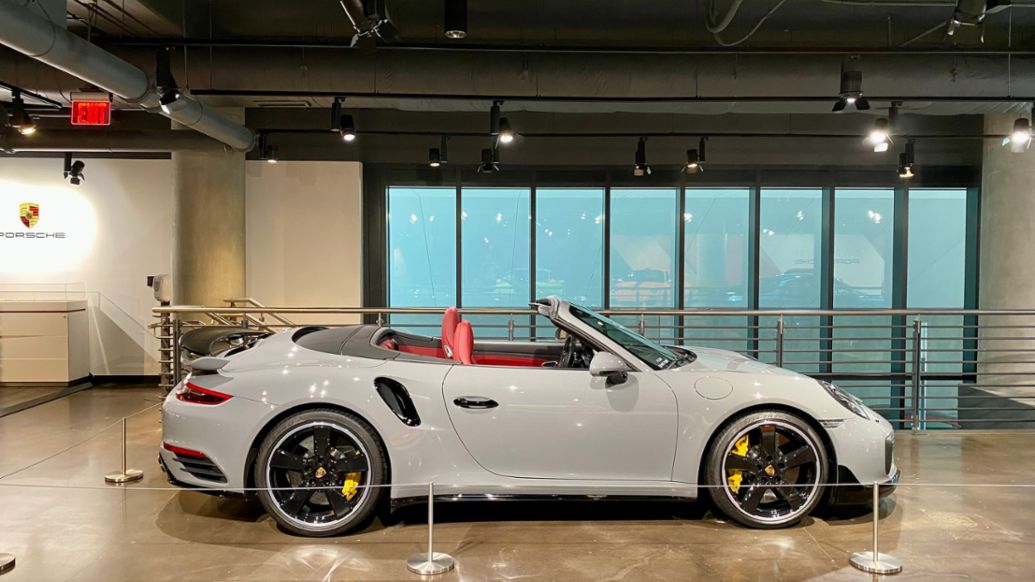
A Porsche is a specialized performance vehicle. Every bit of the sports car has a clear design theme, and any additions to the bodywork, such an aero kit, is built with intentionality. Form and function operate as one.
When spec-ing the 911 Turbo S Cabriolet seen before you, owner Christopher Rennie took all the considerations originally made by the artists and engineers in Weissach into account. With that in mind, he was drawn to the non-metallic Paint to Sample options available through Porsche Exclusive Manufaktur, deciding to paint the 580 hp missile in Nardo Grey, a color originally debuted by Audi in its high-performance RS trims. According to Rennie, the opaque nature of Nardo Grey enhances the appearance of the paint, giving the car a milky texture. It turns what could otherwise be seen as a neutral color choice, grey, into a bespoke look, and its quality is instantly recognizable as special.
Contrasting the Nardo Grey exterior with a Bordeaux Red leather interior further accentuates the diversity available through customization, and gives the eye something else to latch onto as the flat-six Turbo S accelerates past you on the track, reaching speeds of more than 200 mph. Vehicle courtesy of the Christopher Rennie. Transportation by Reliable Carriers, Inc.
